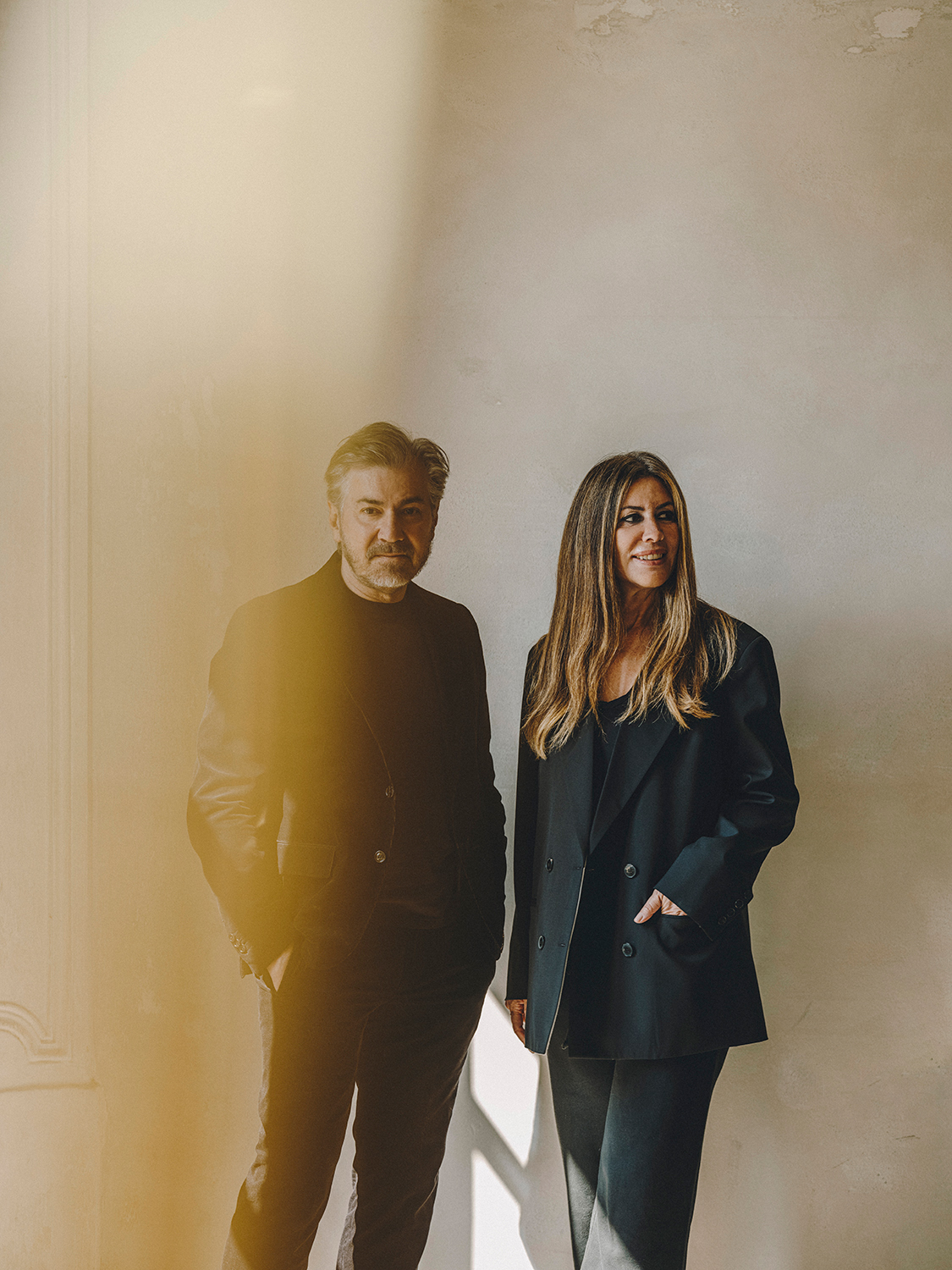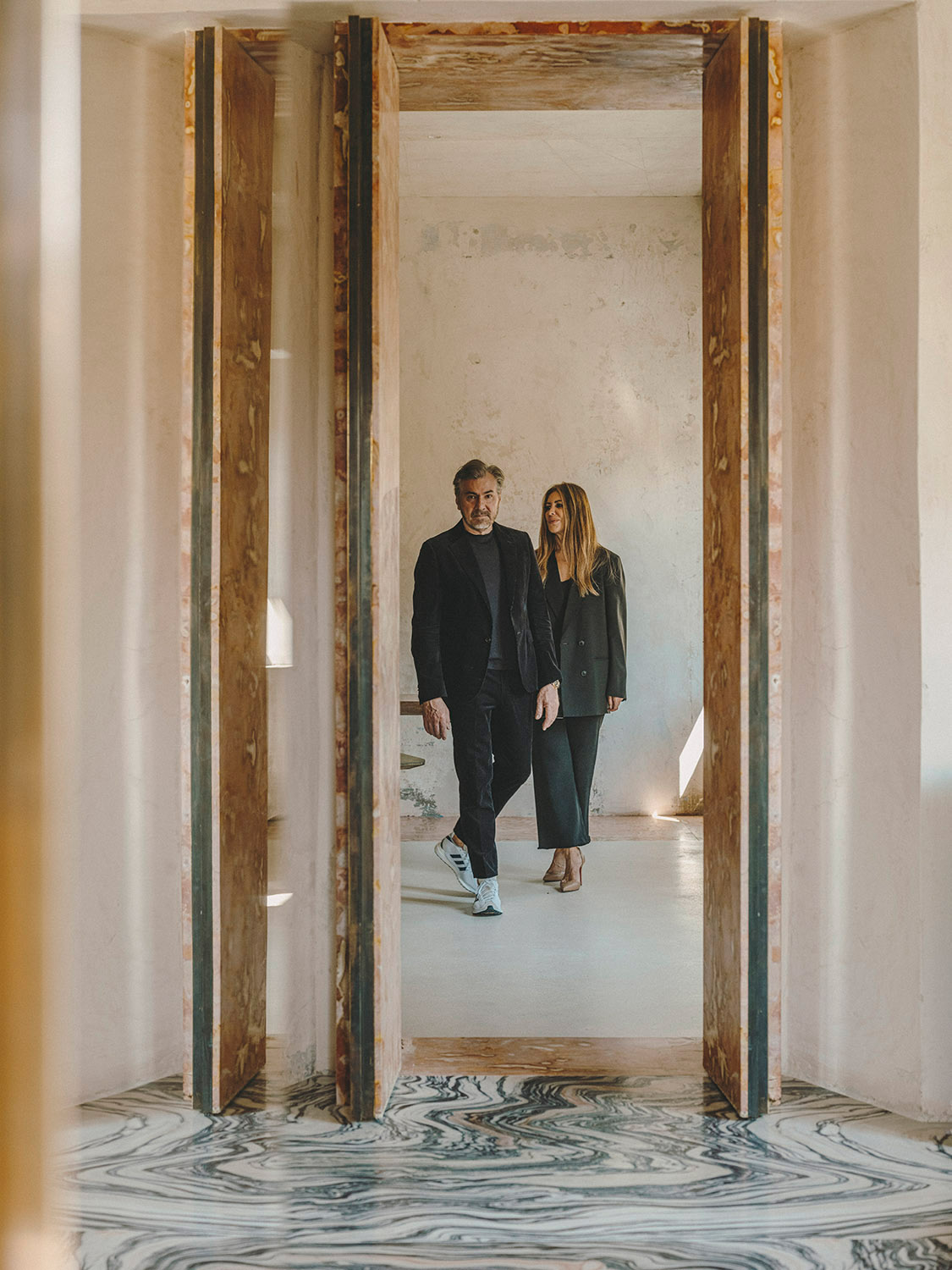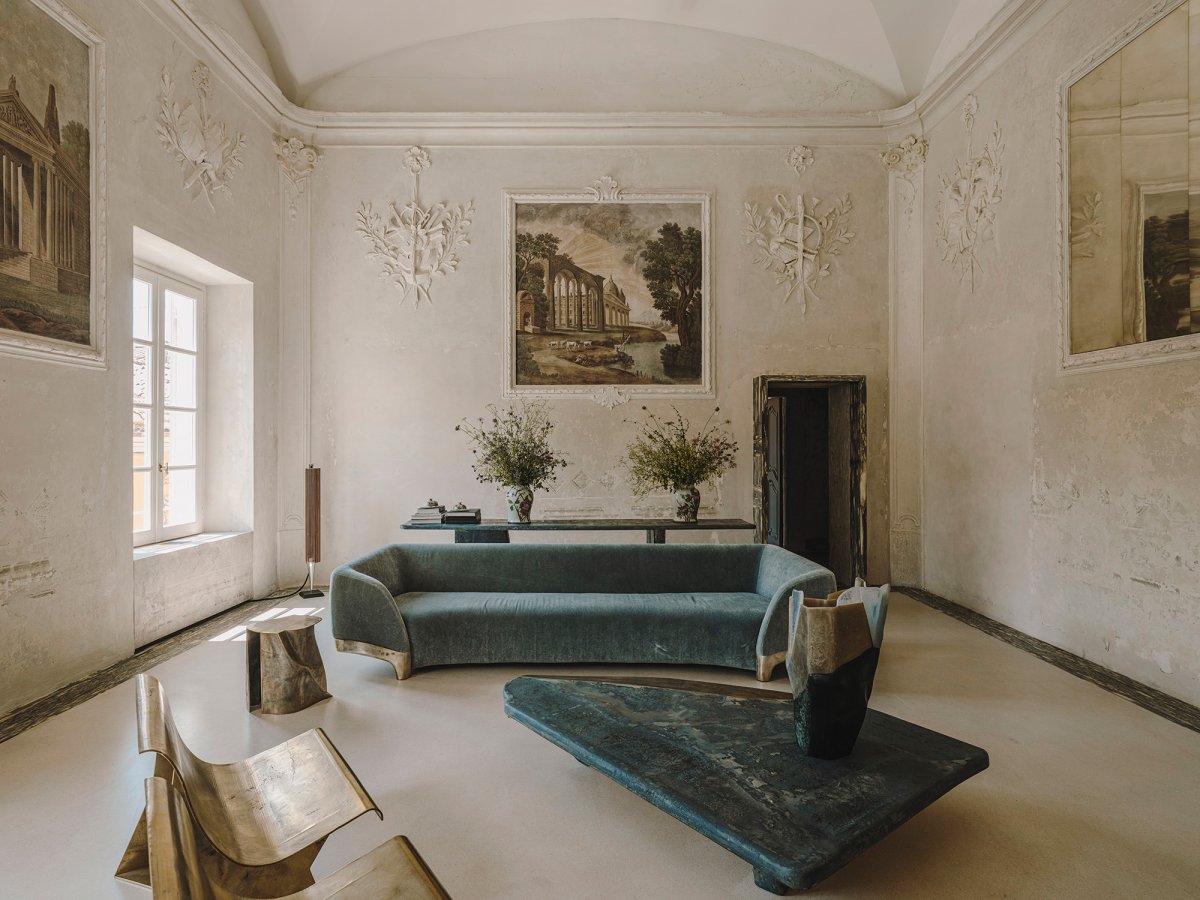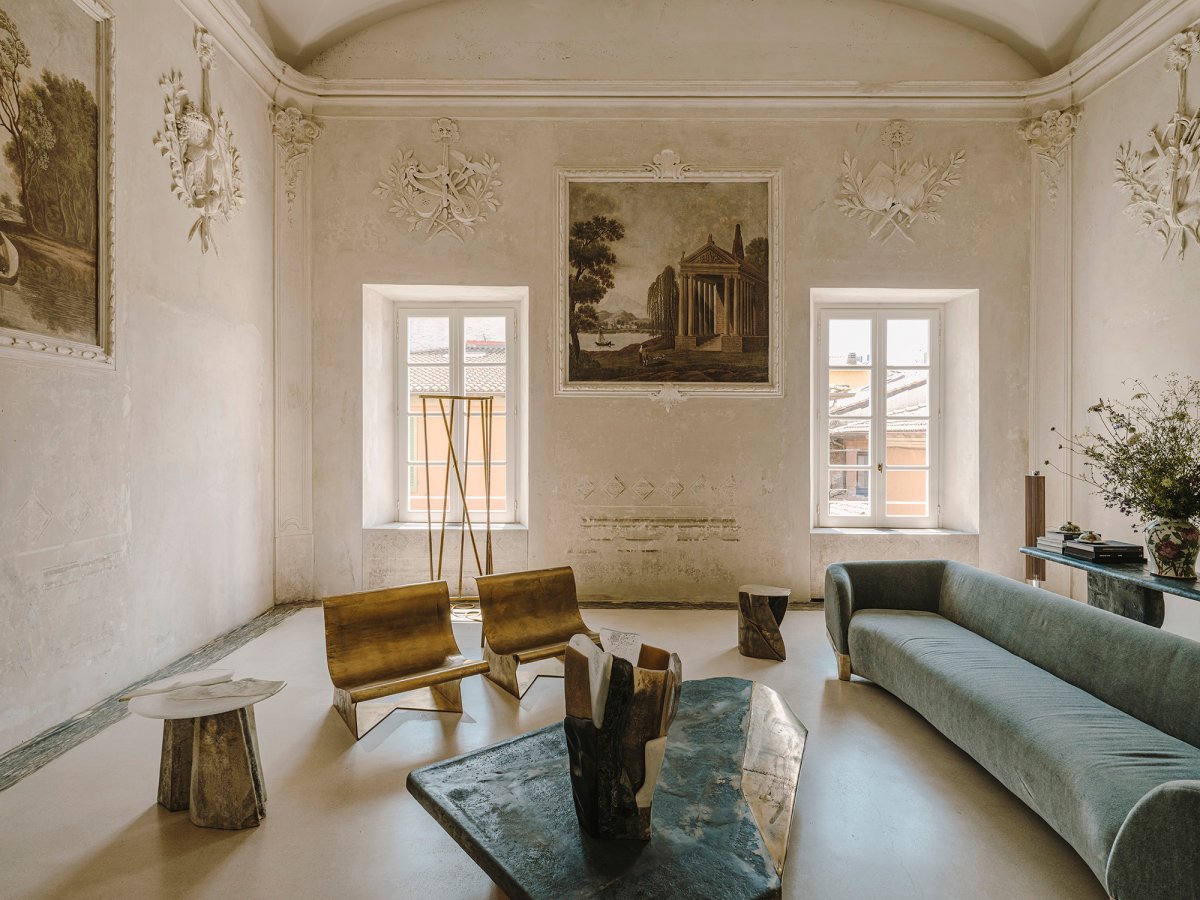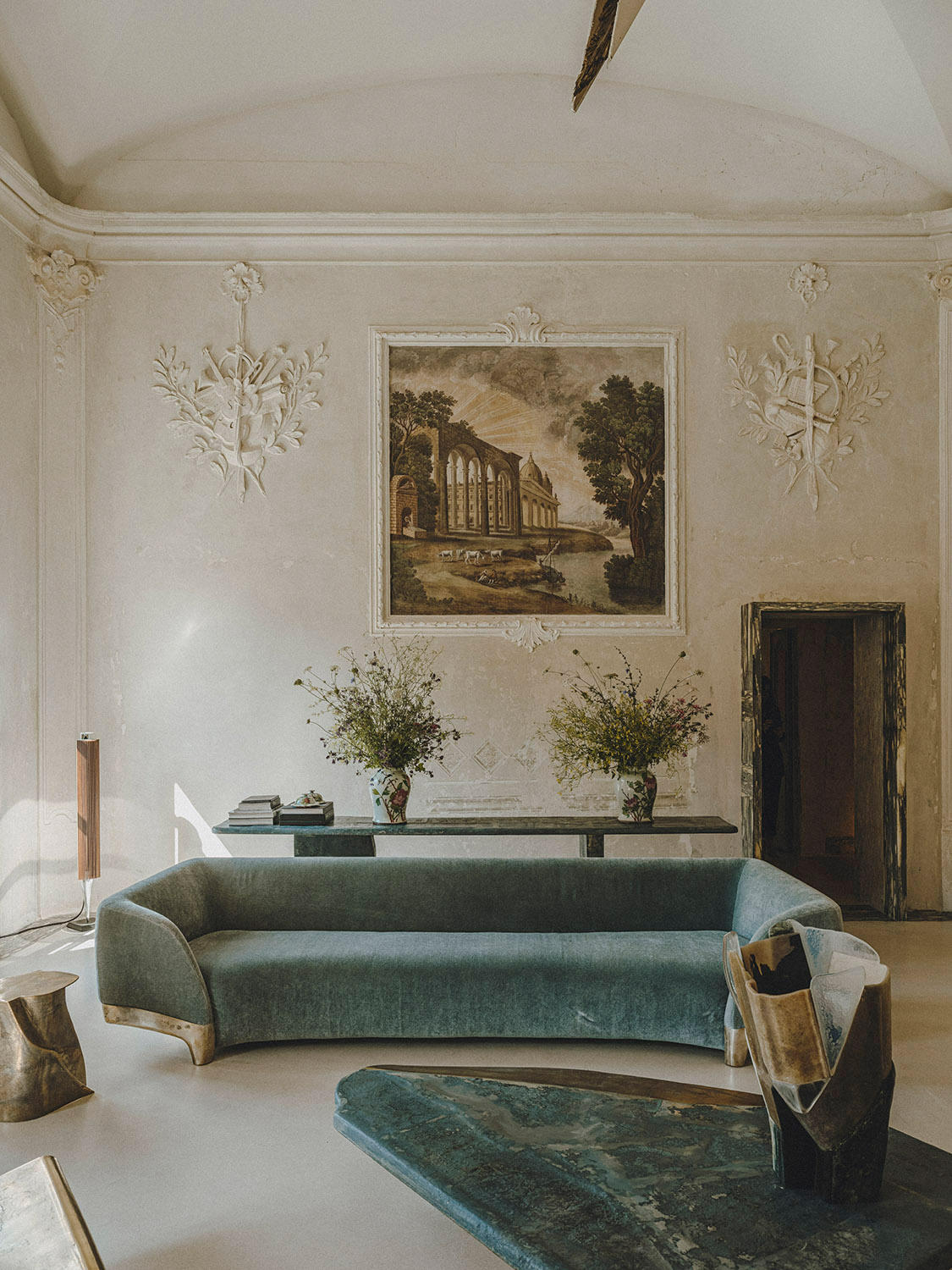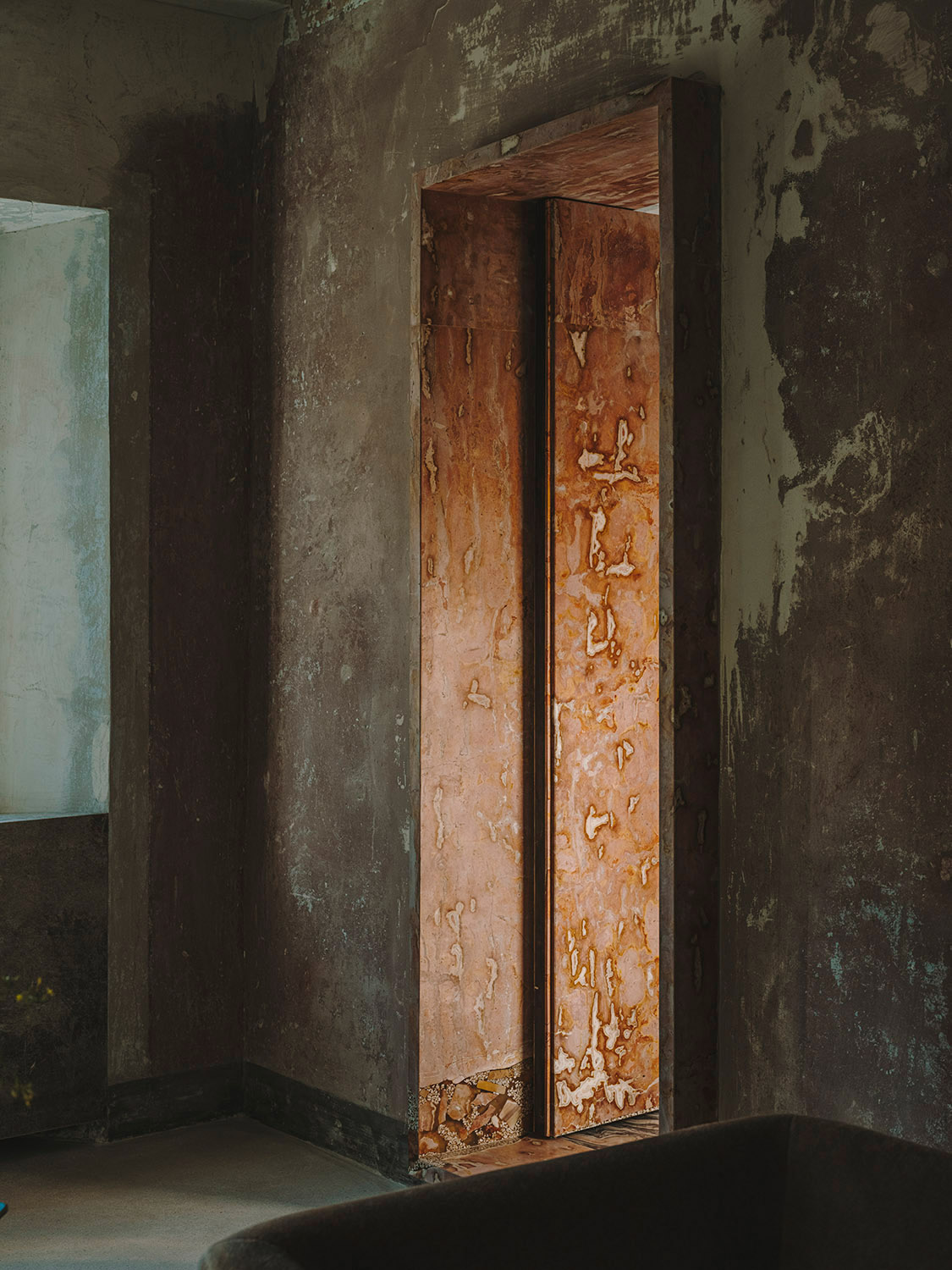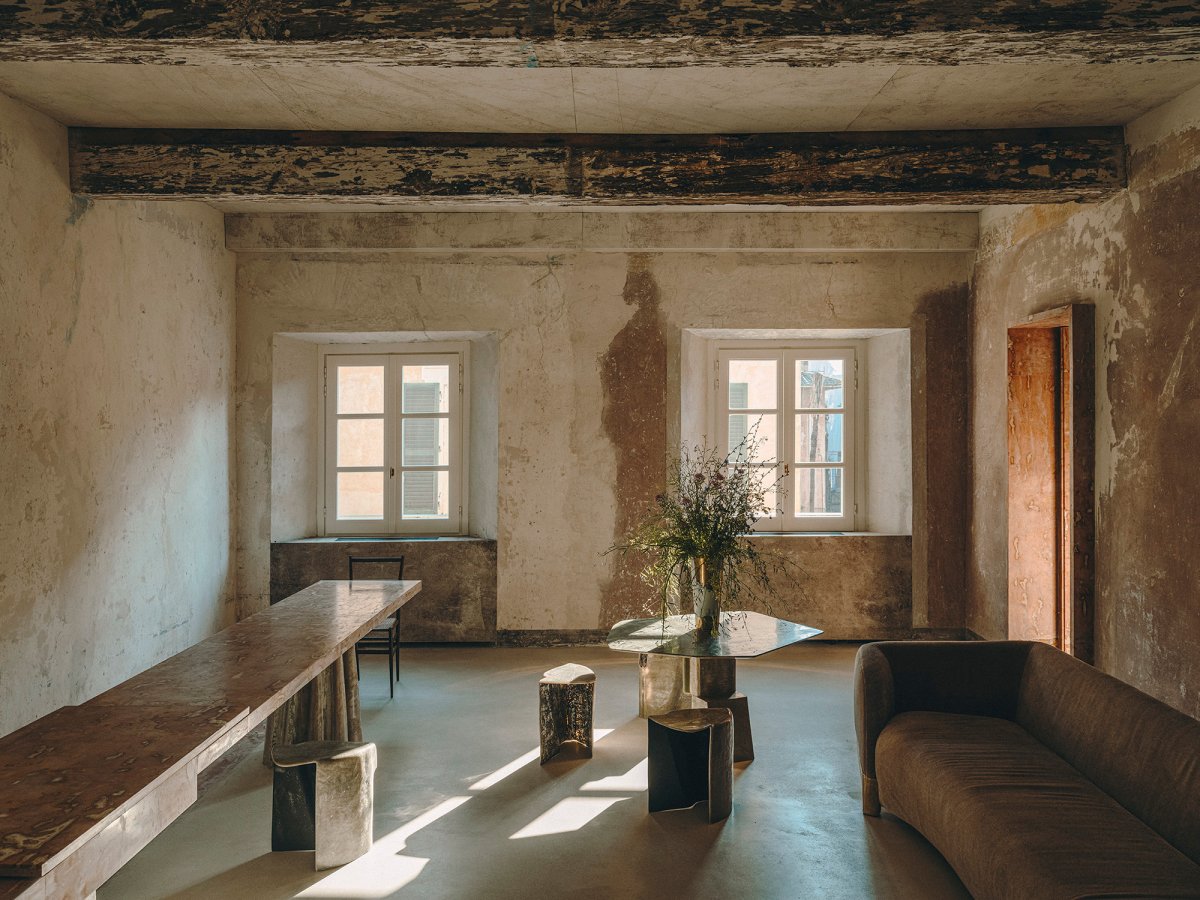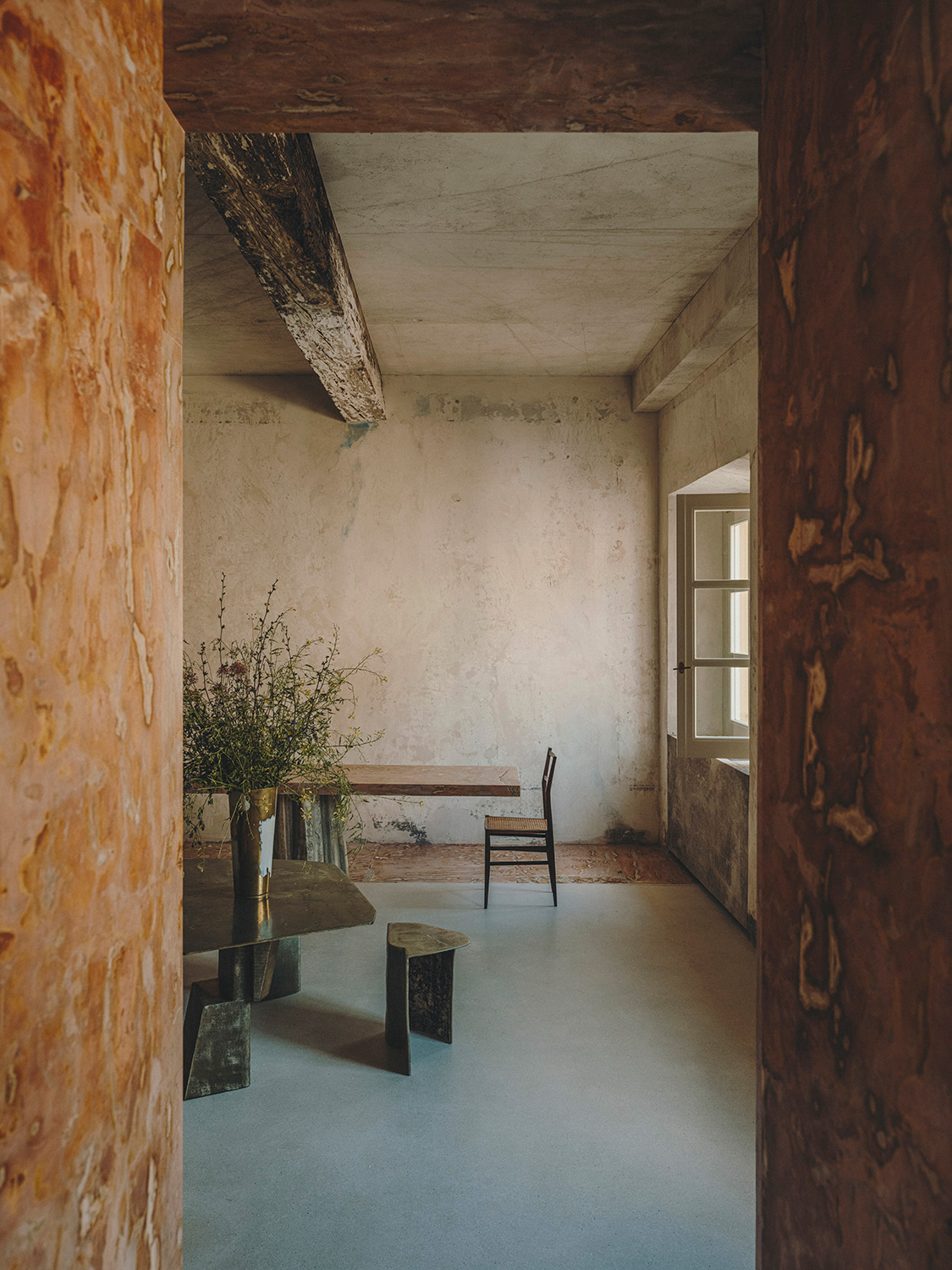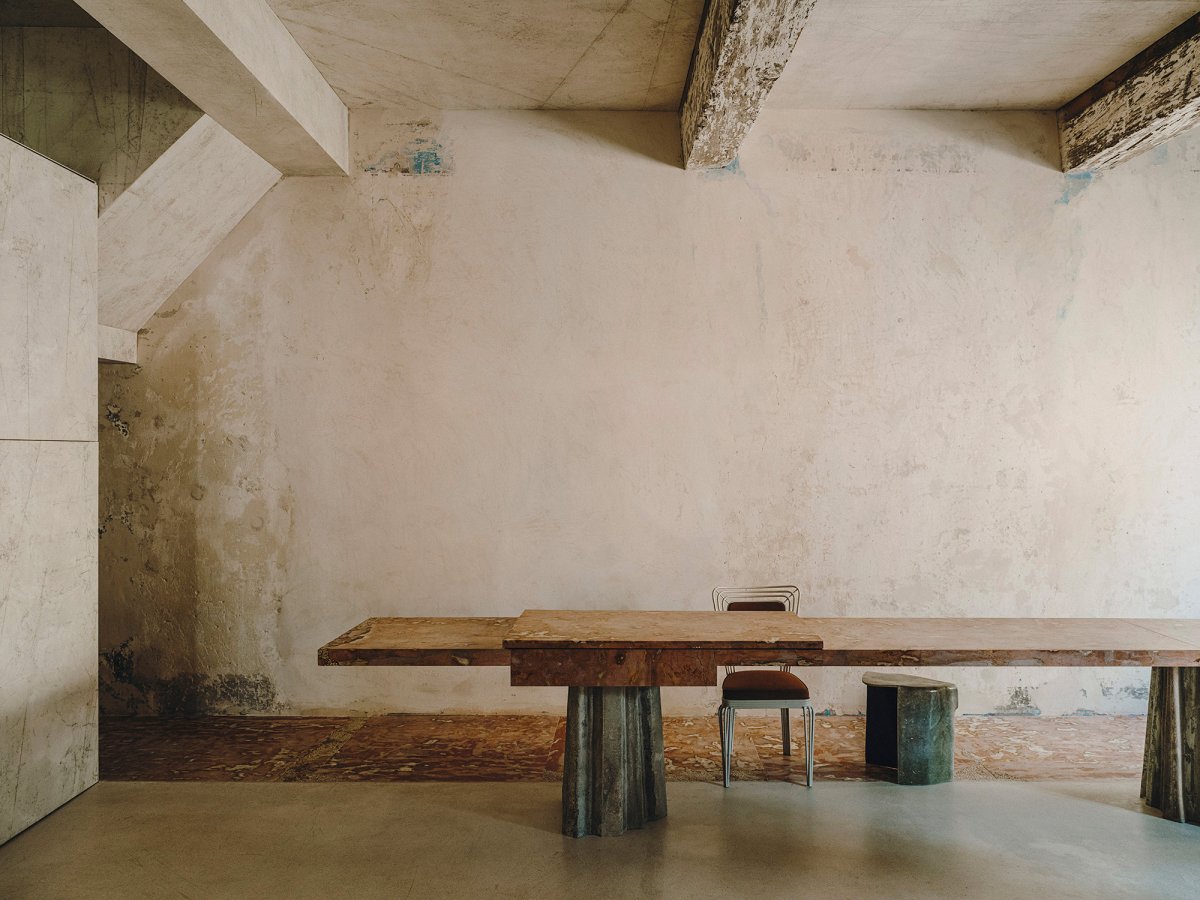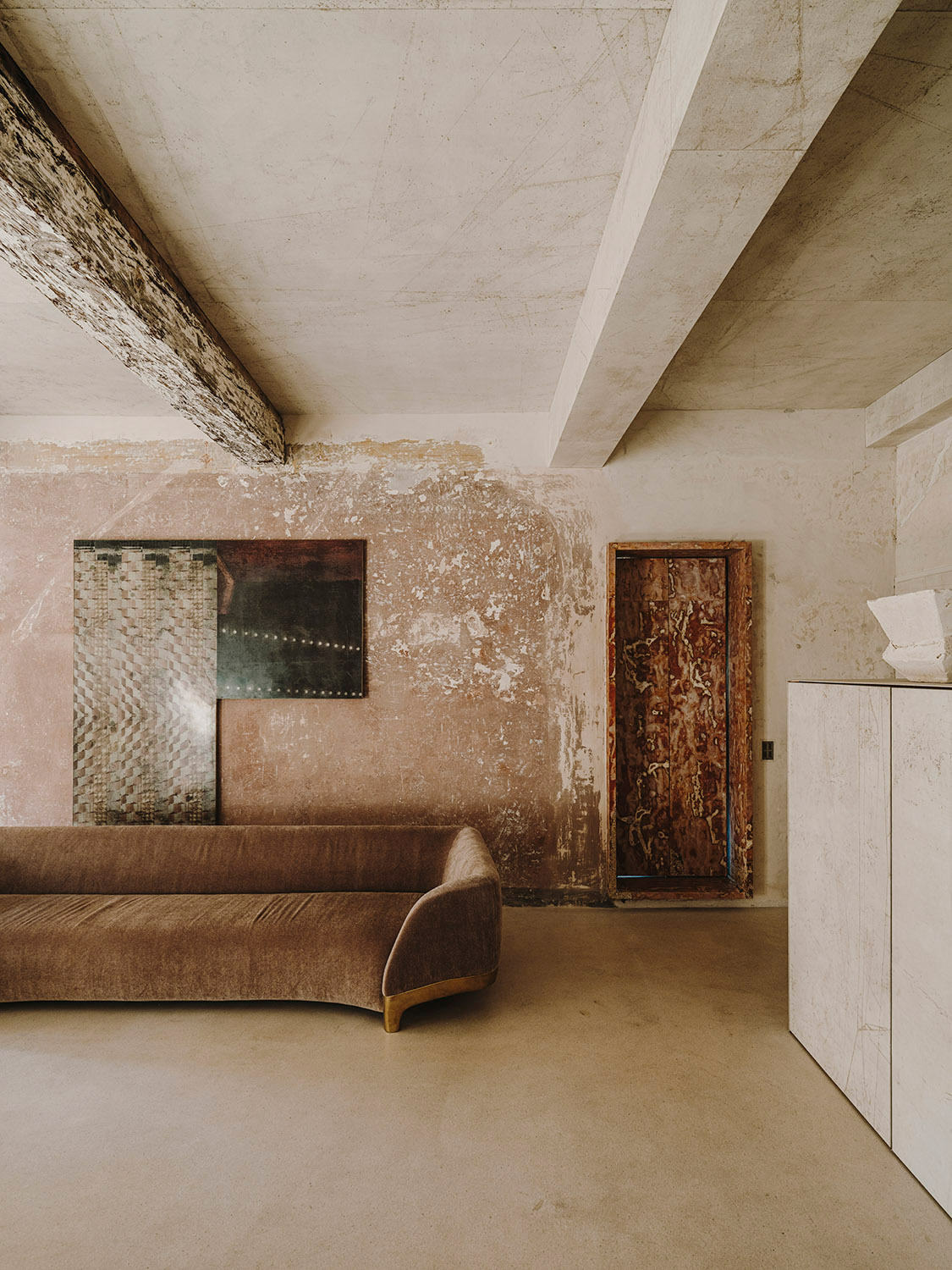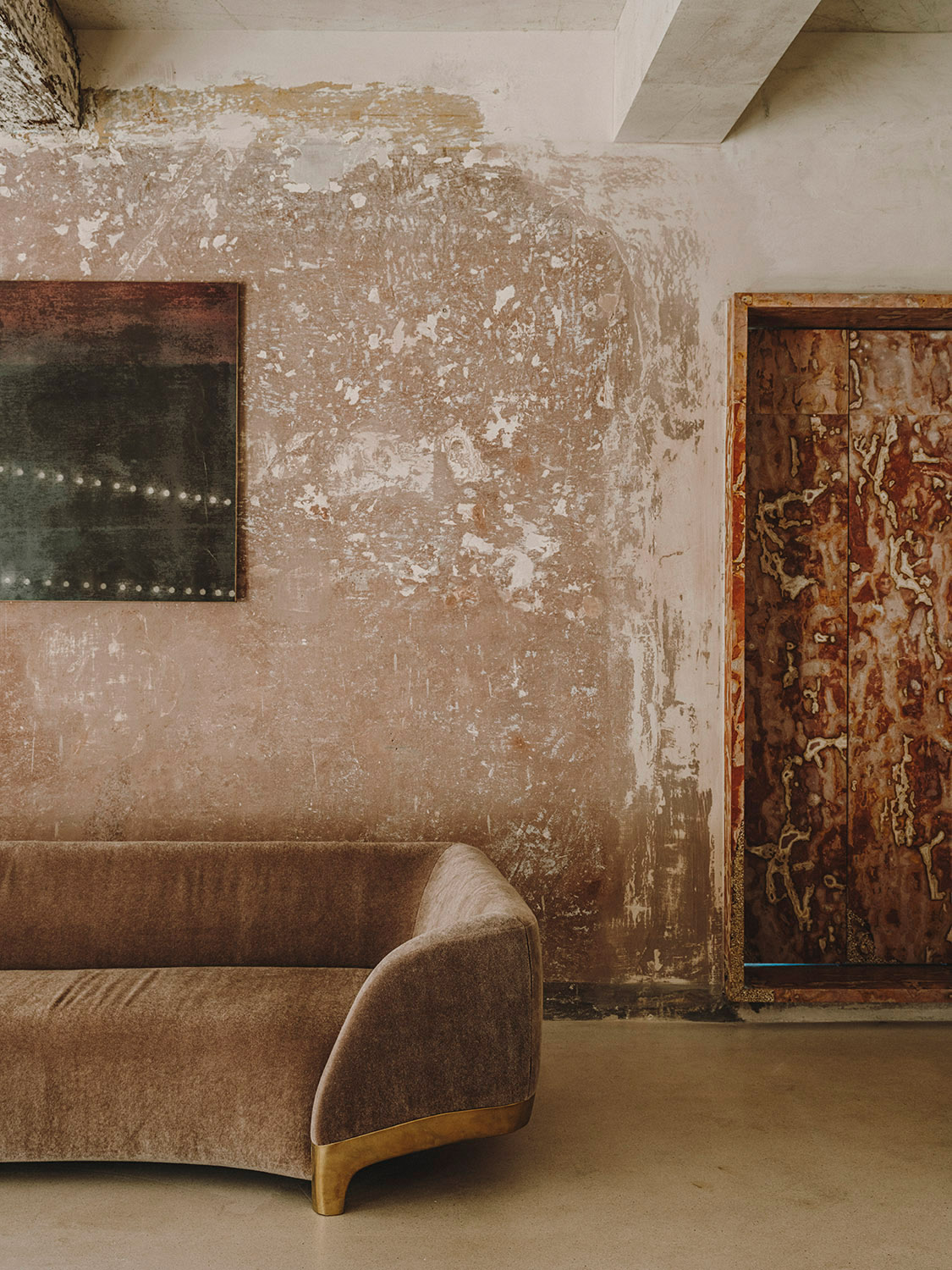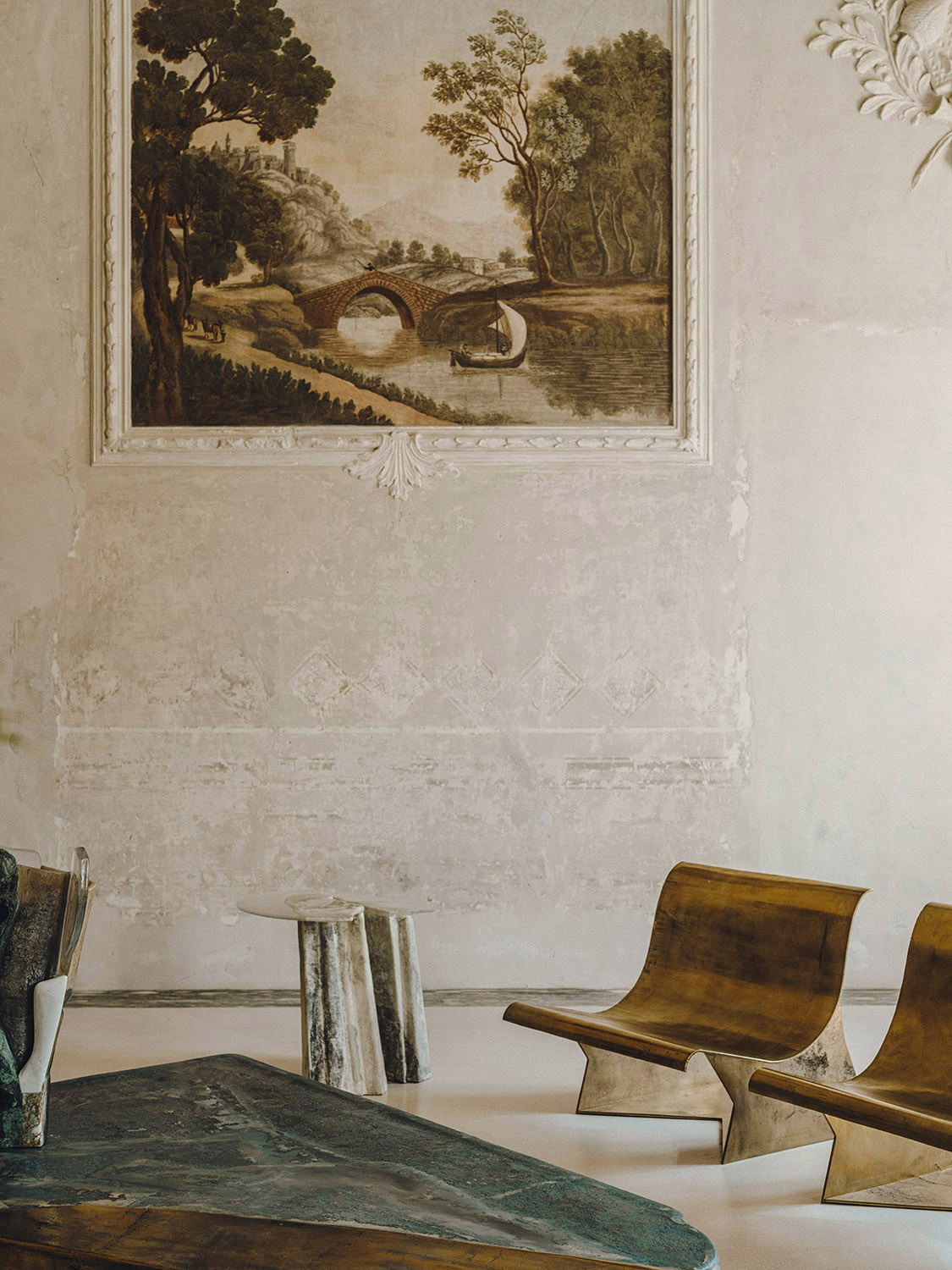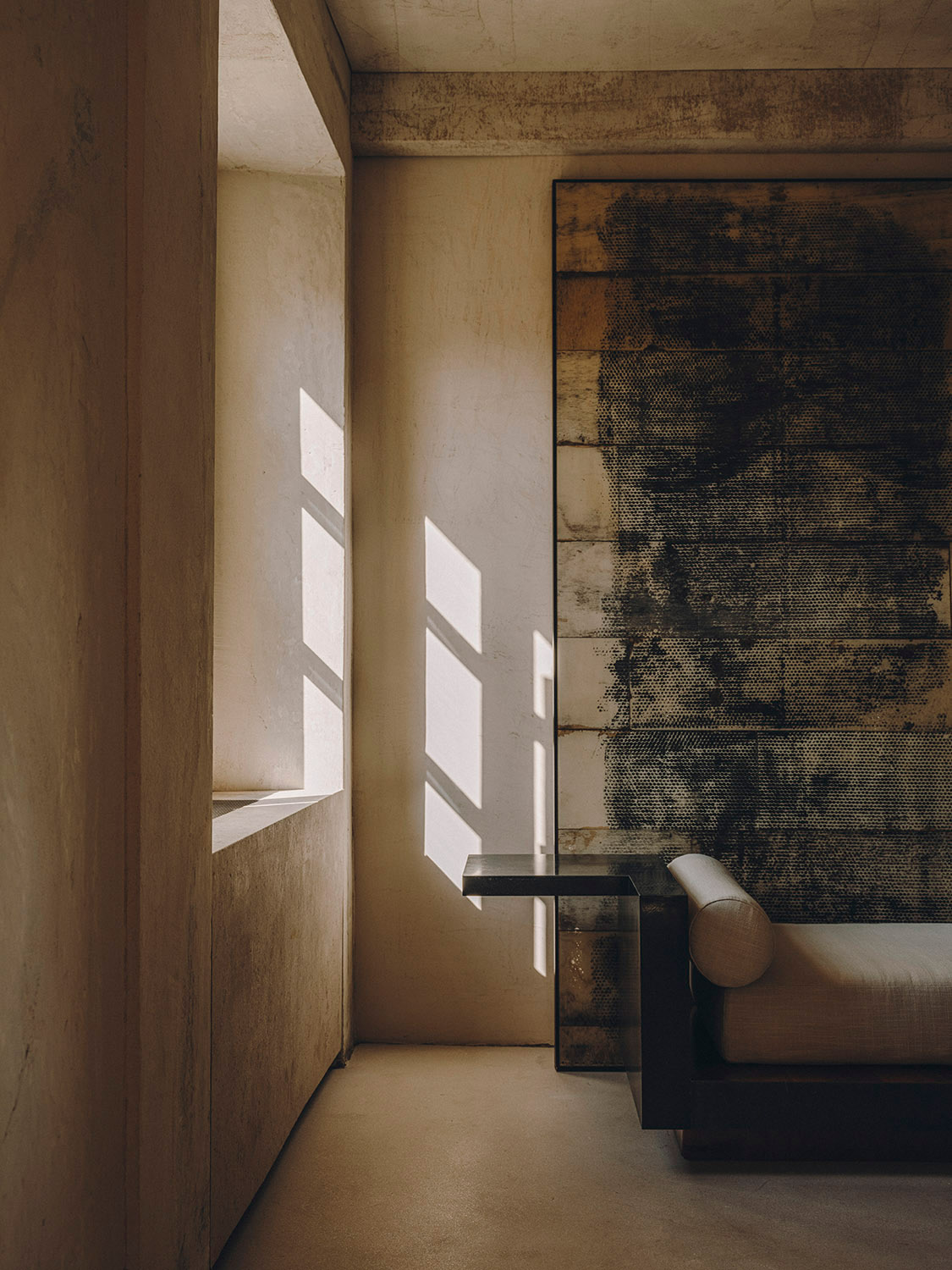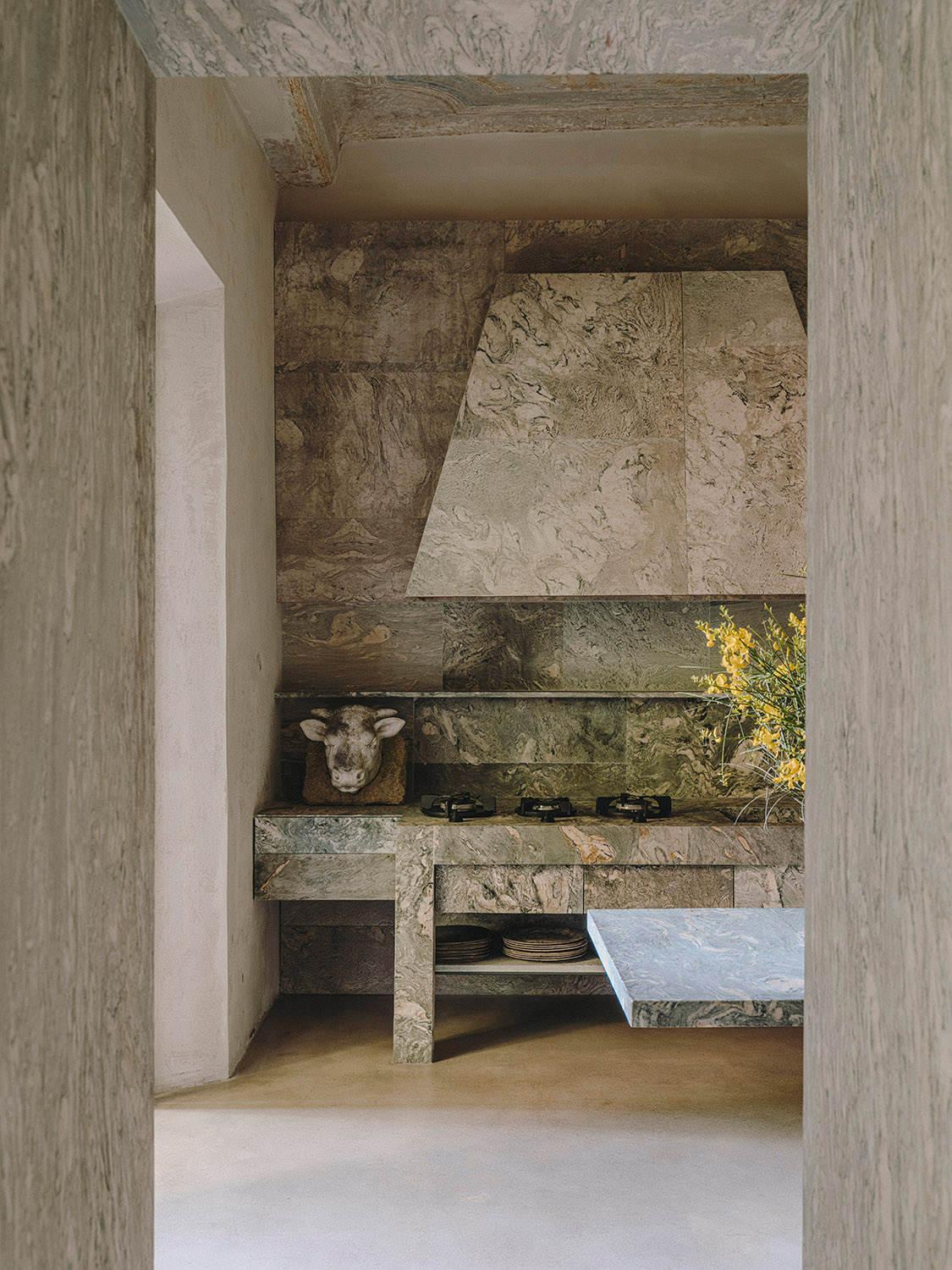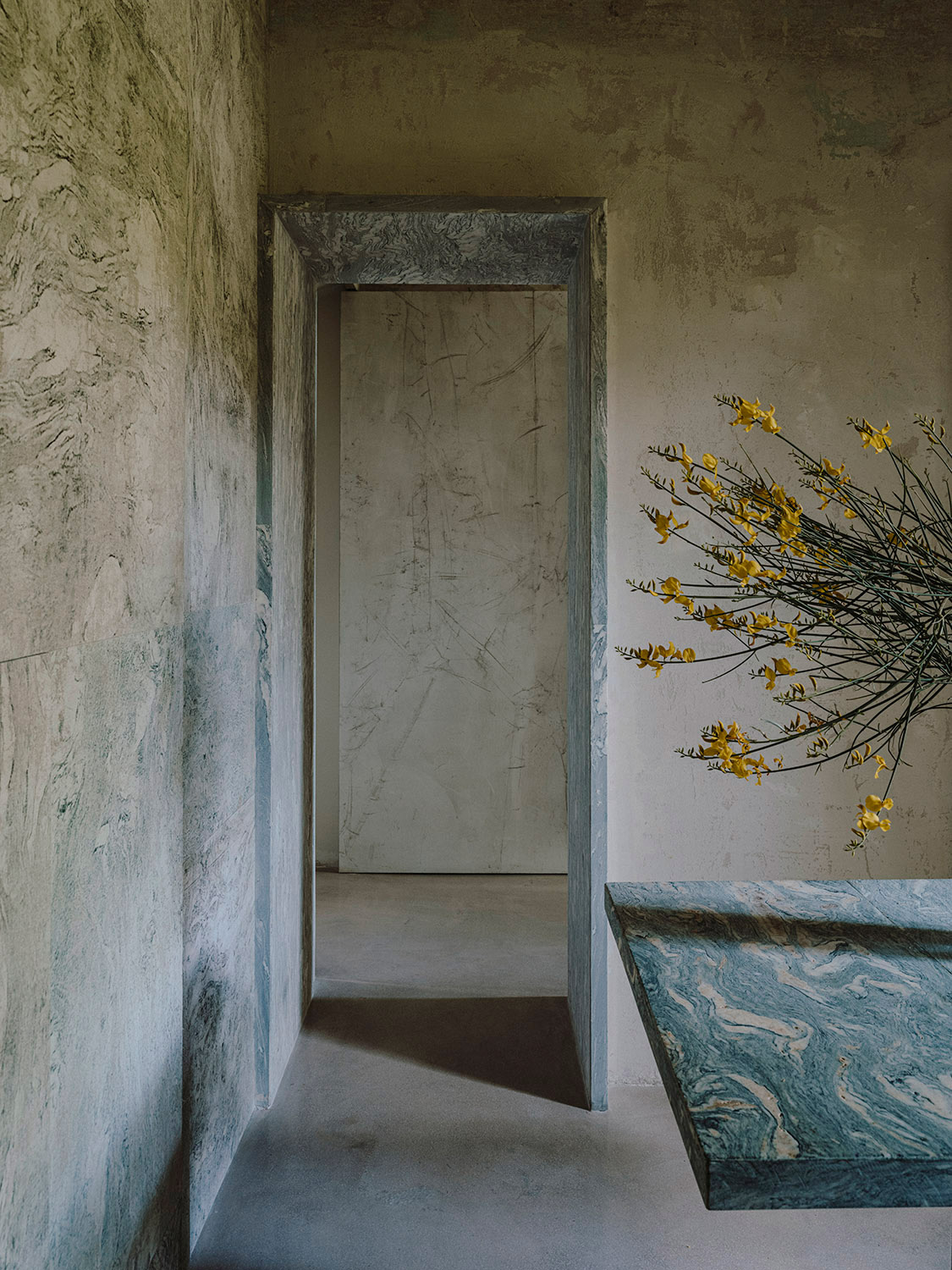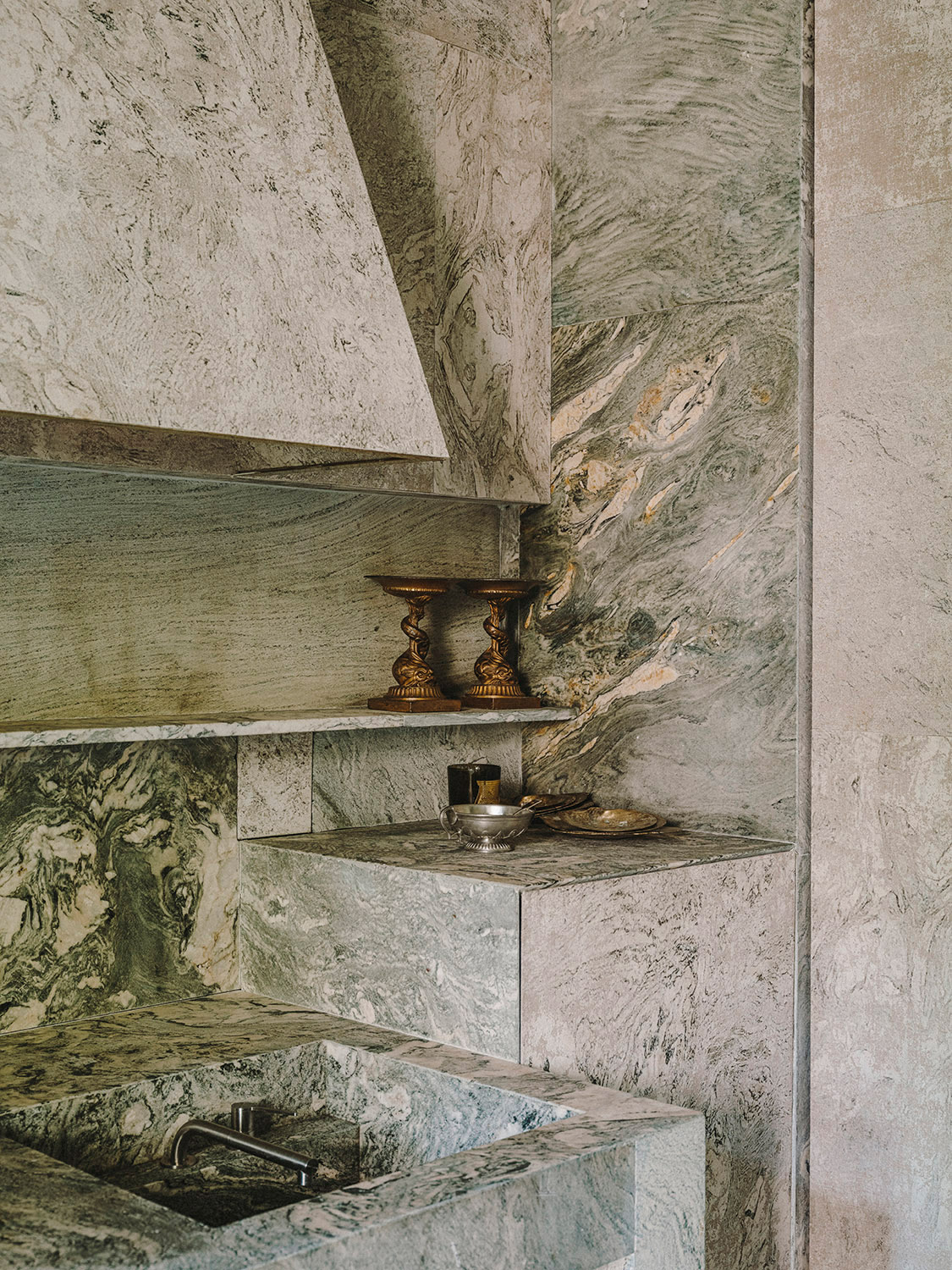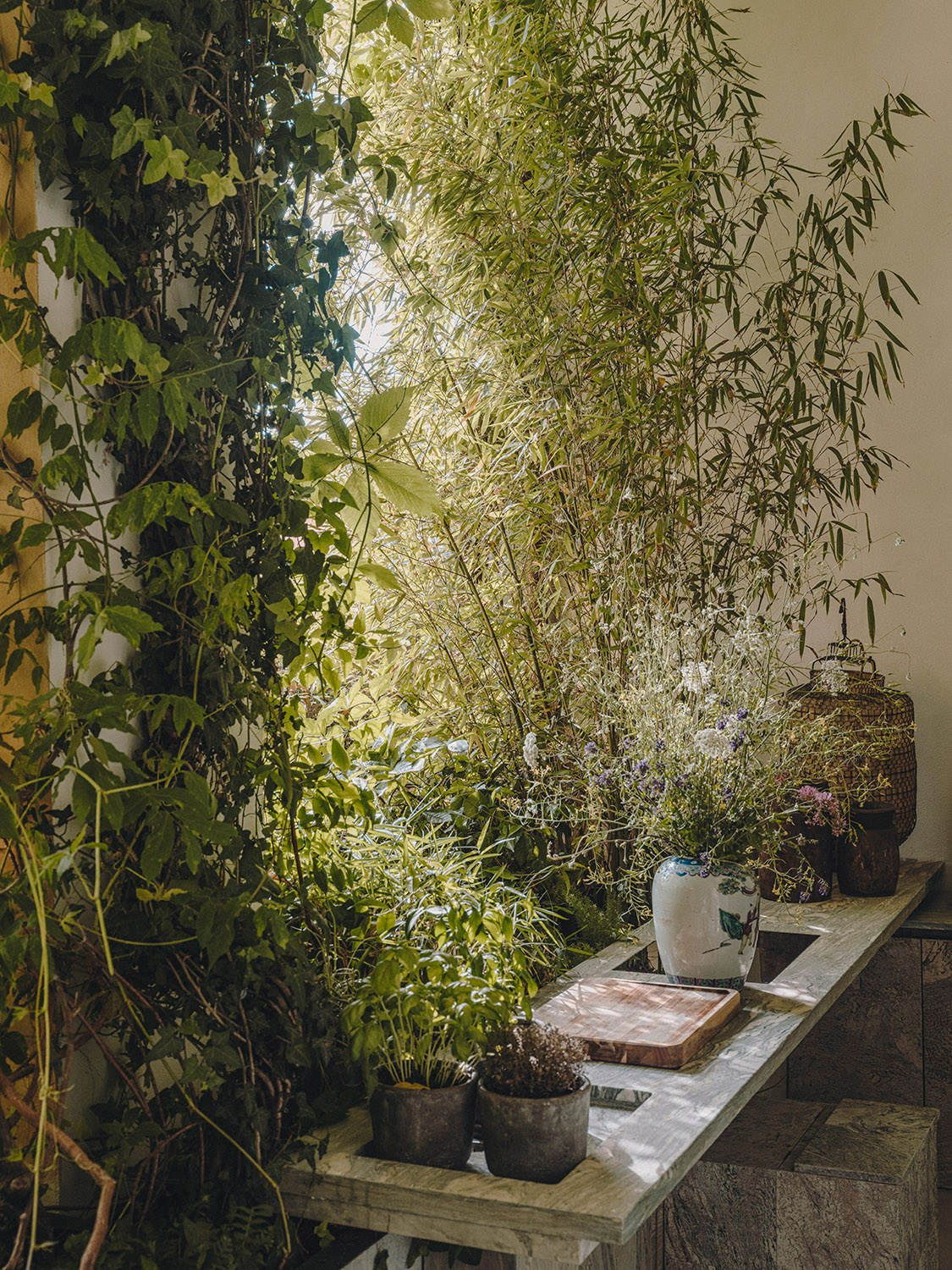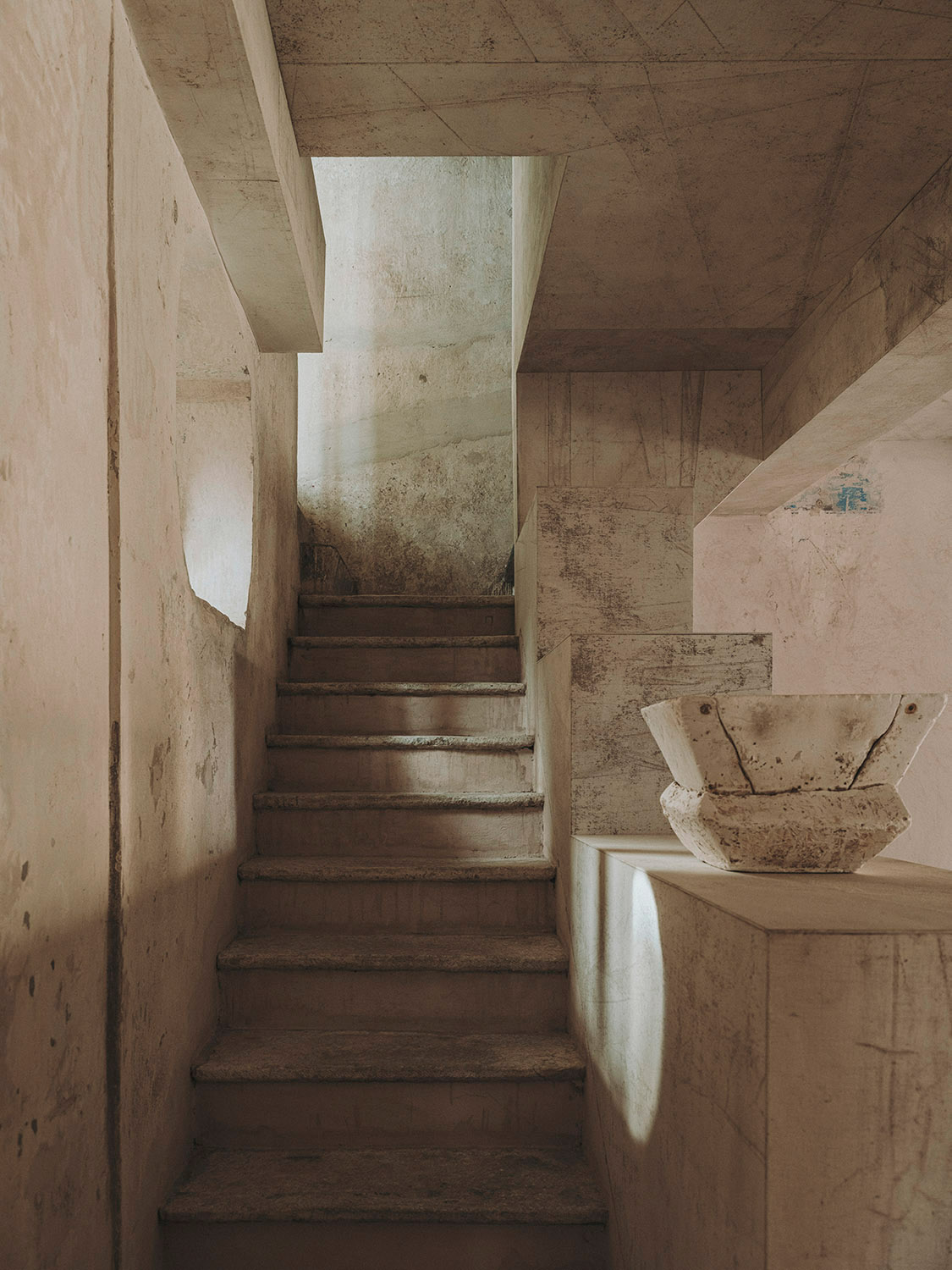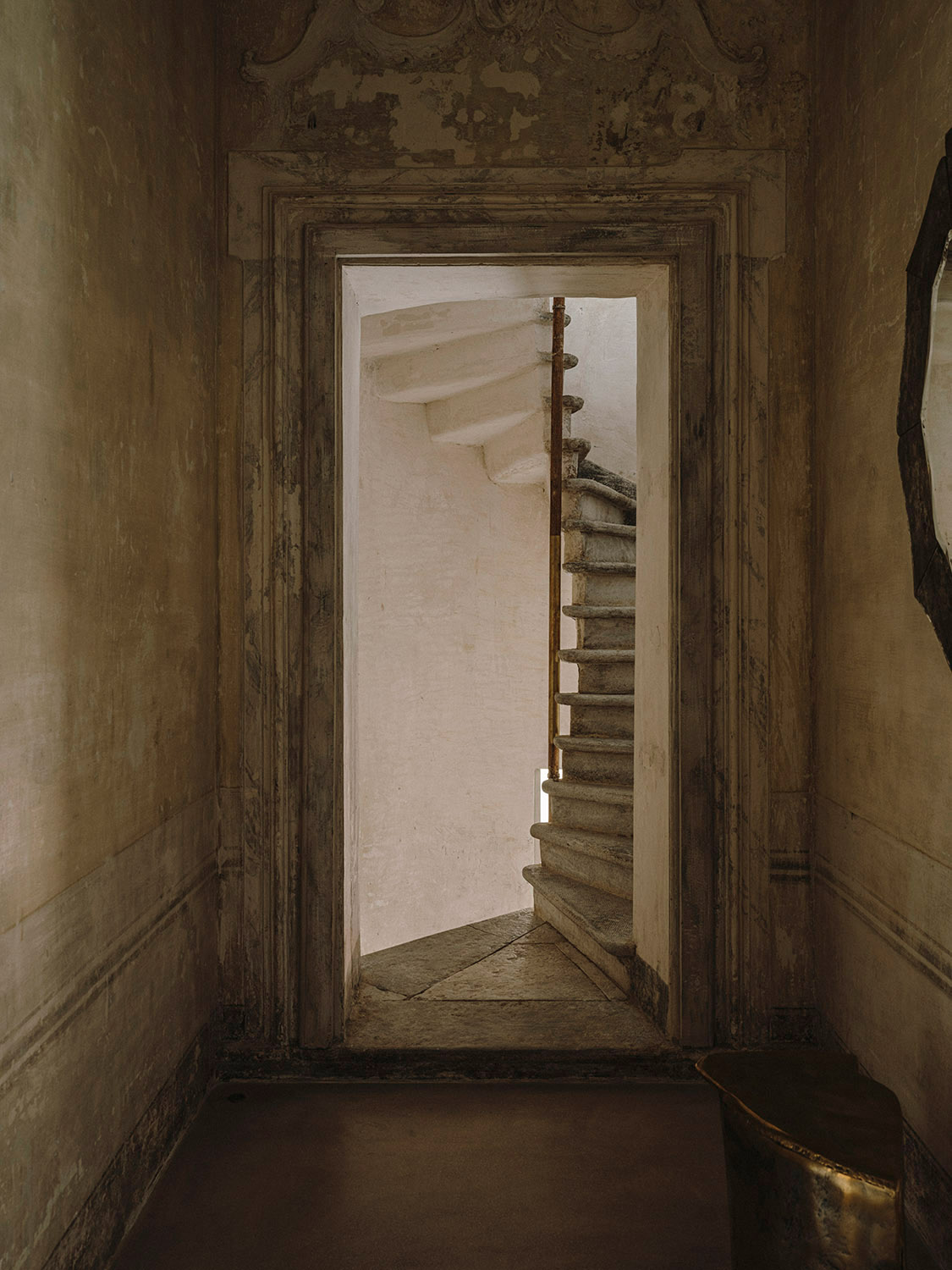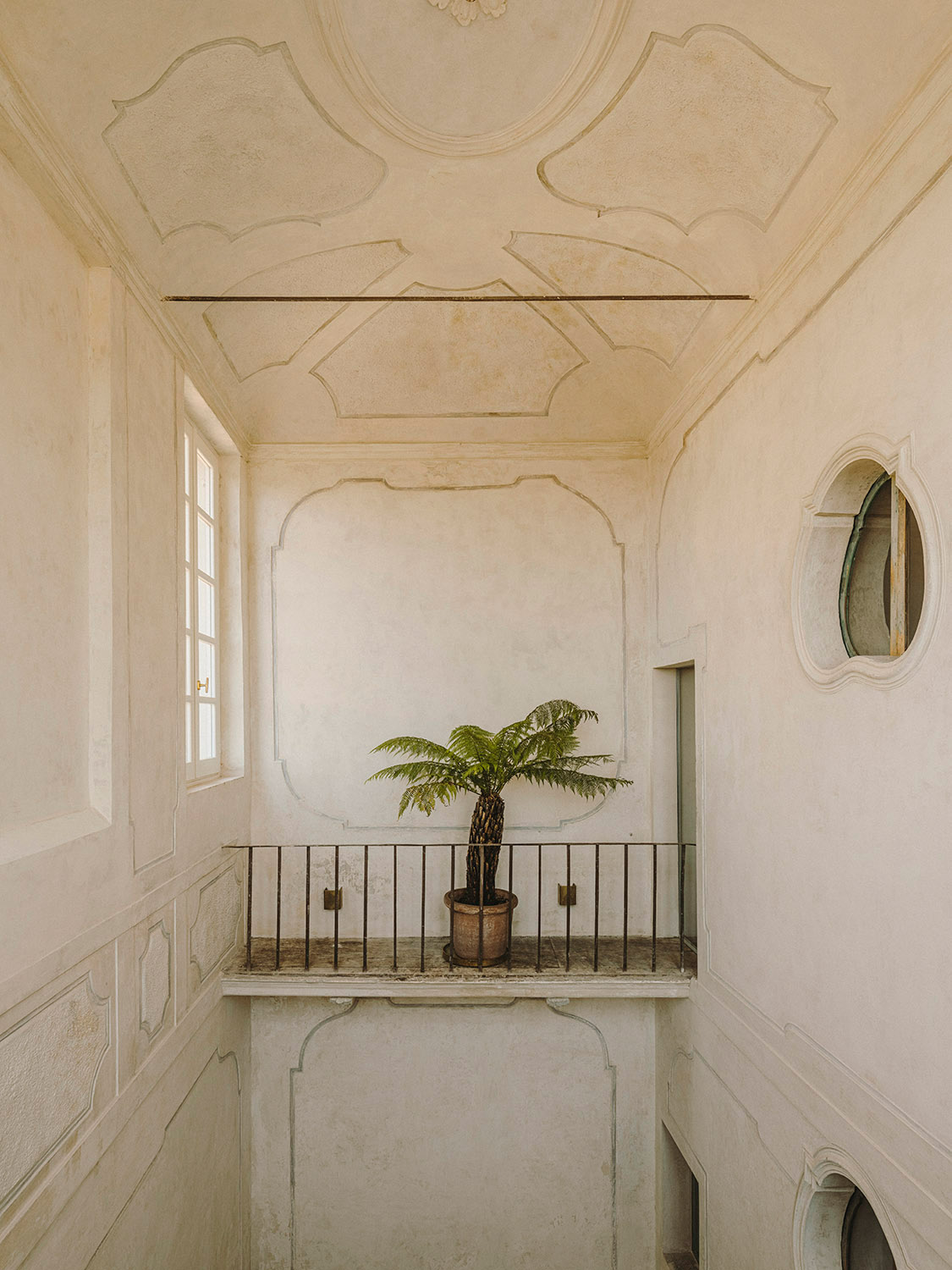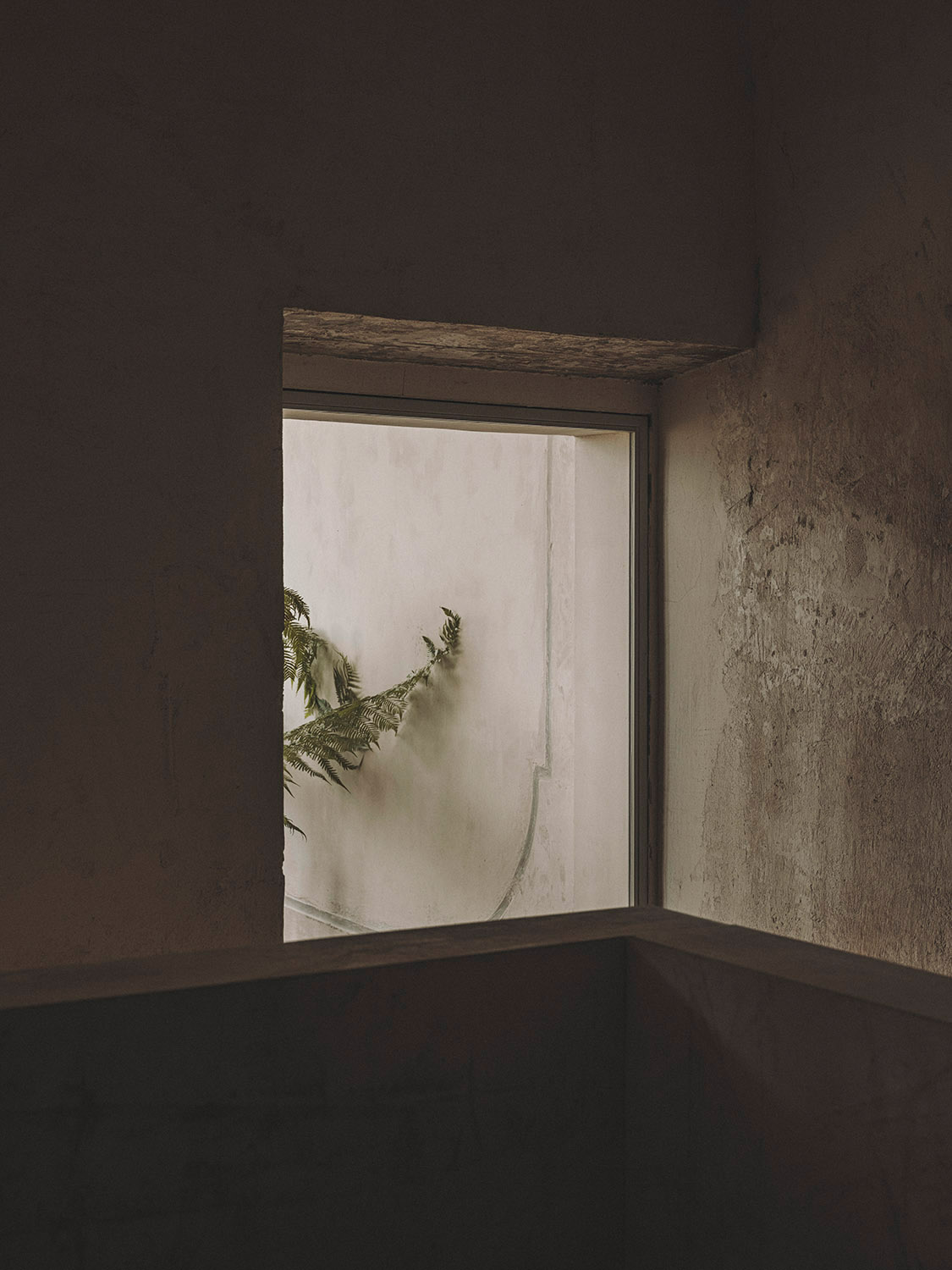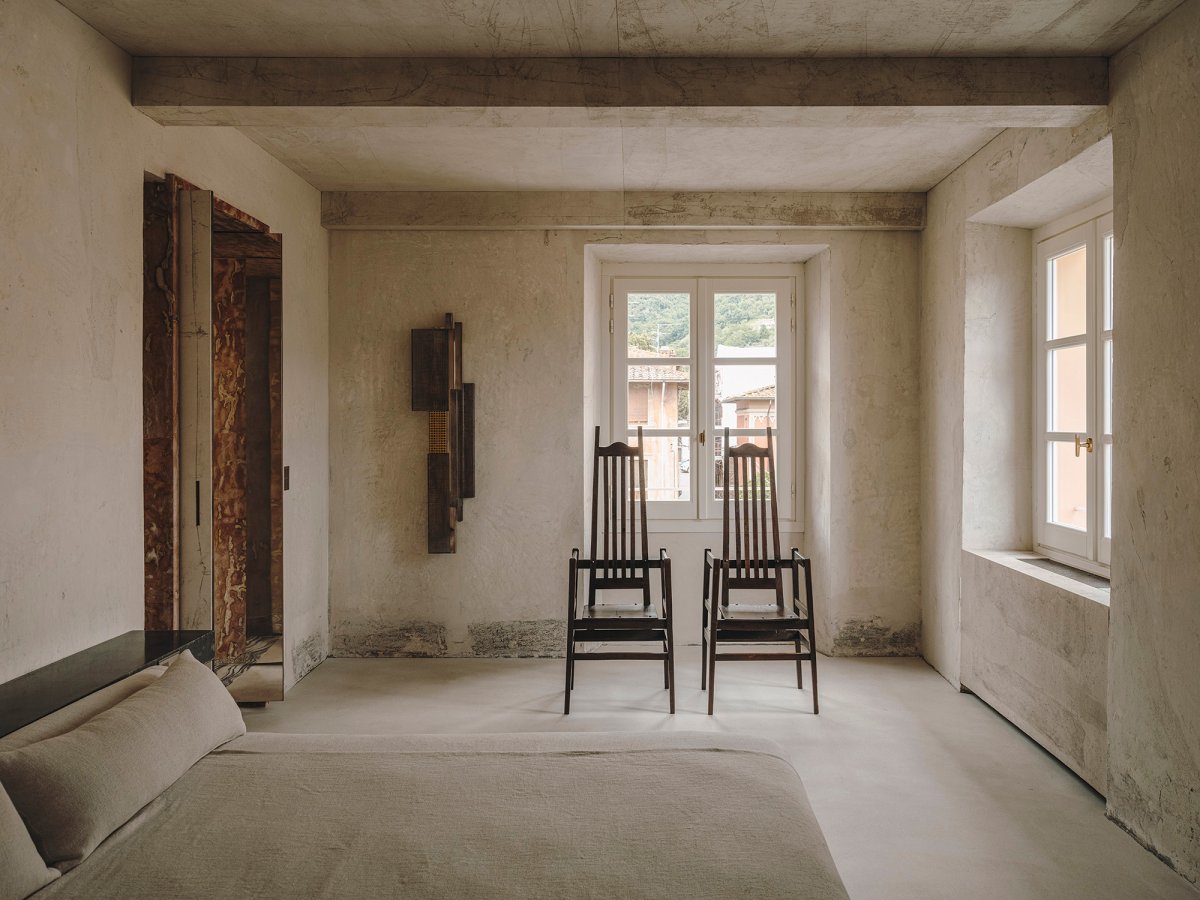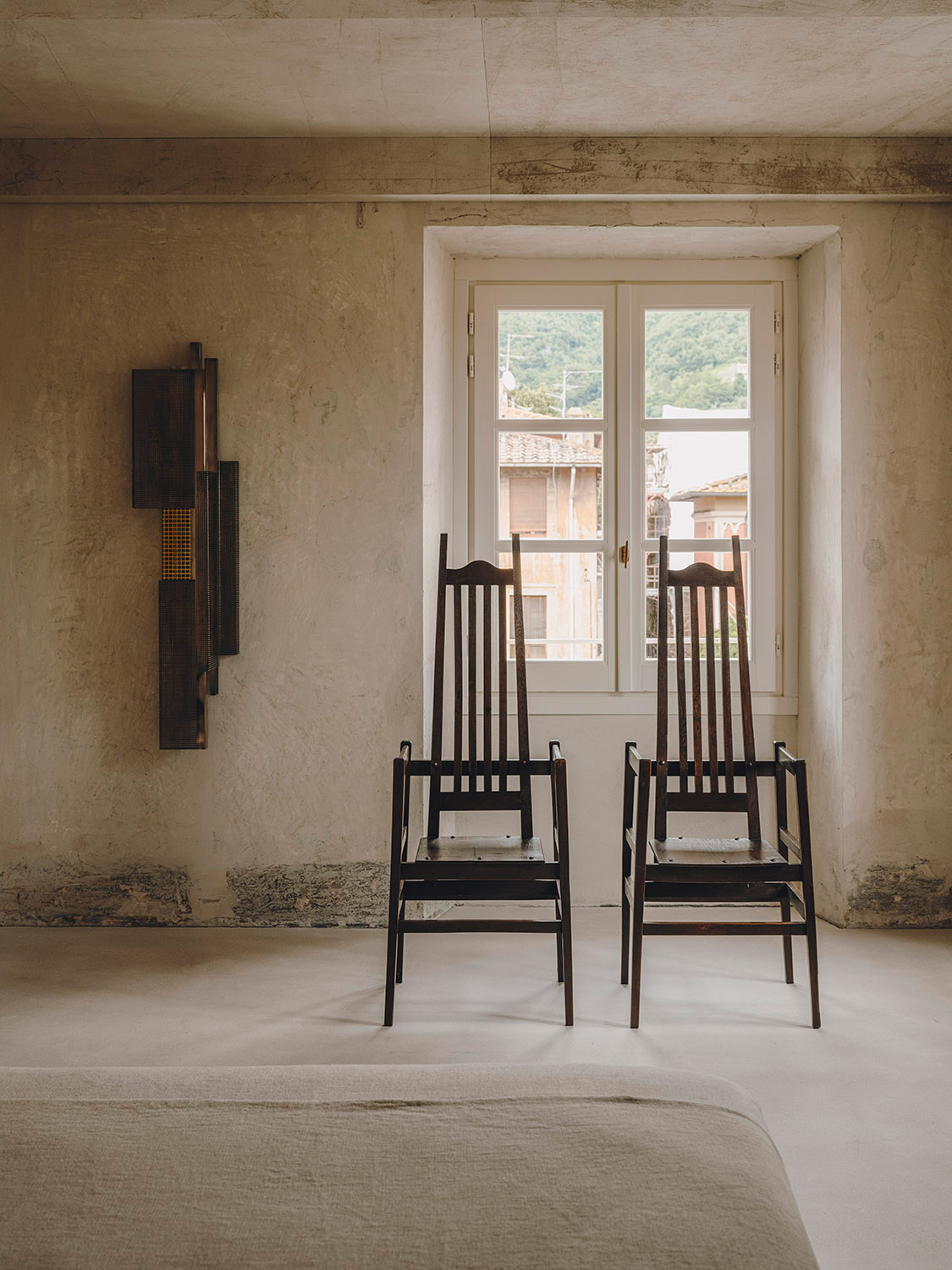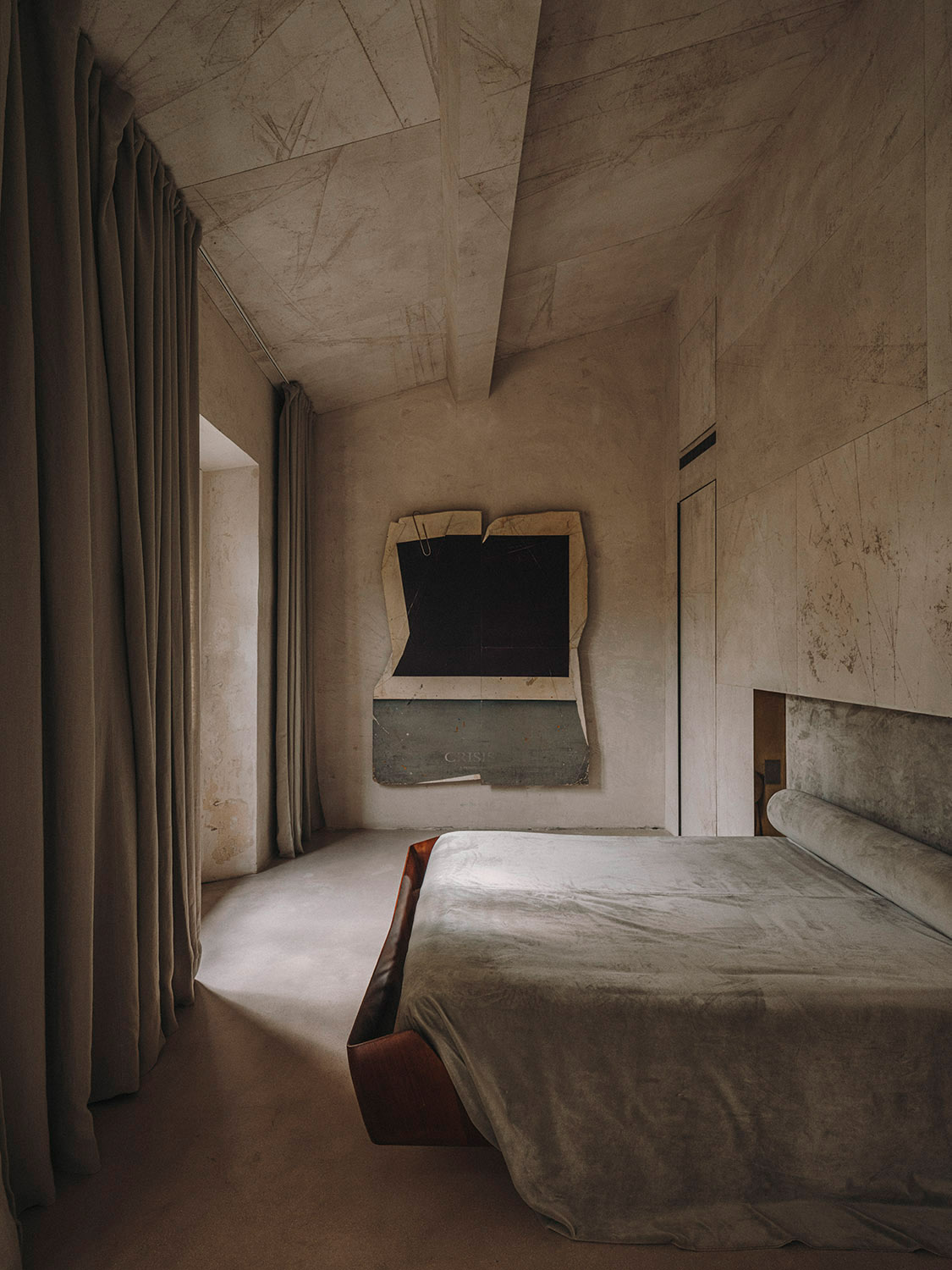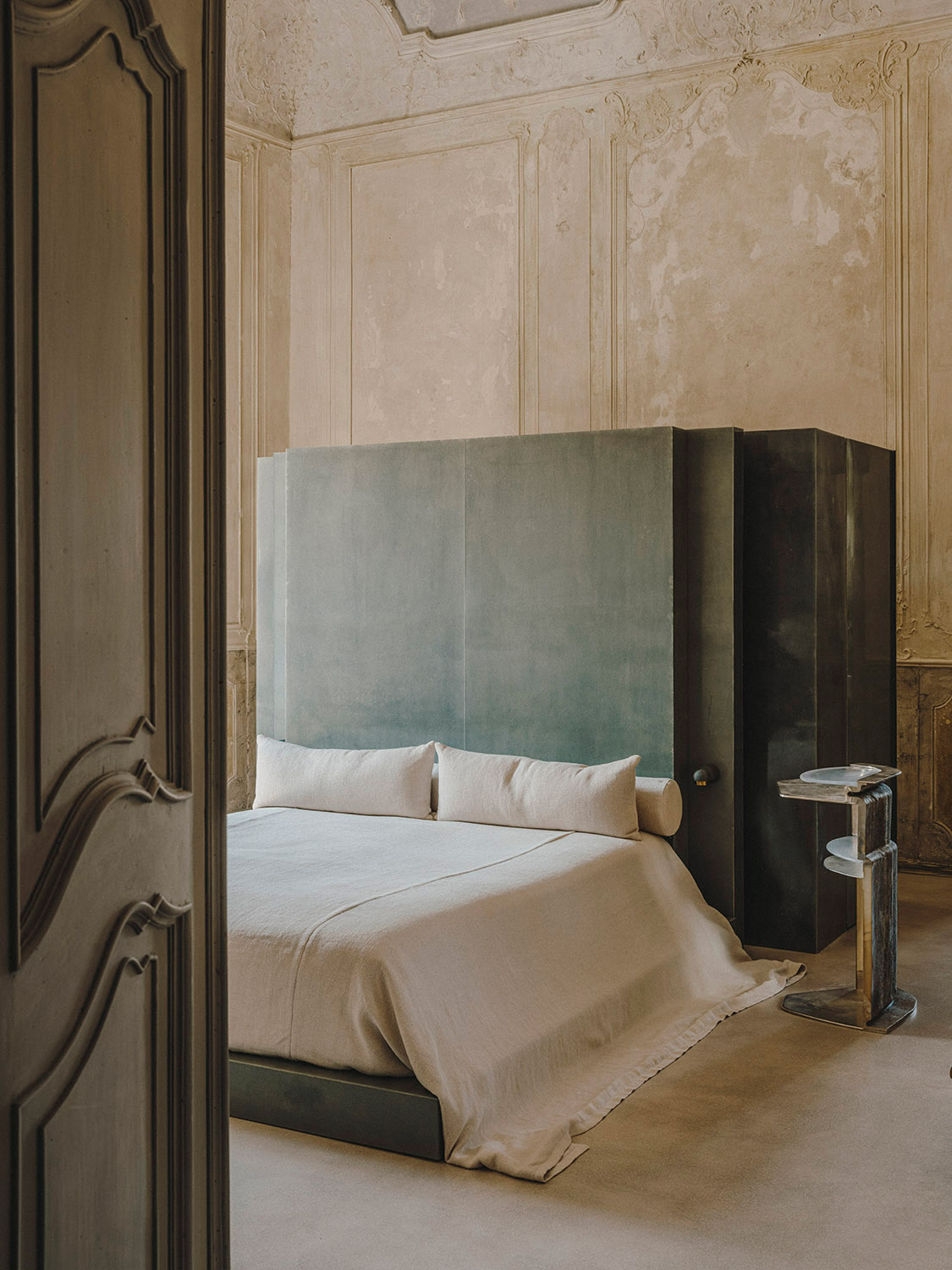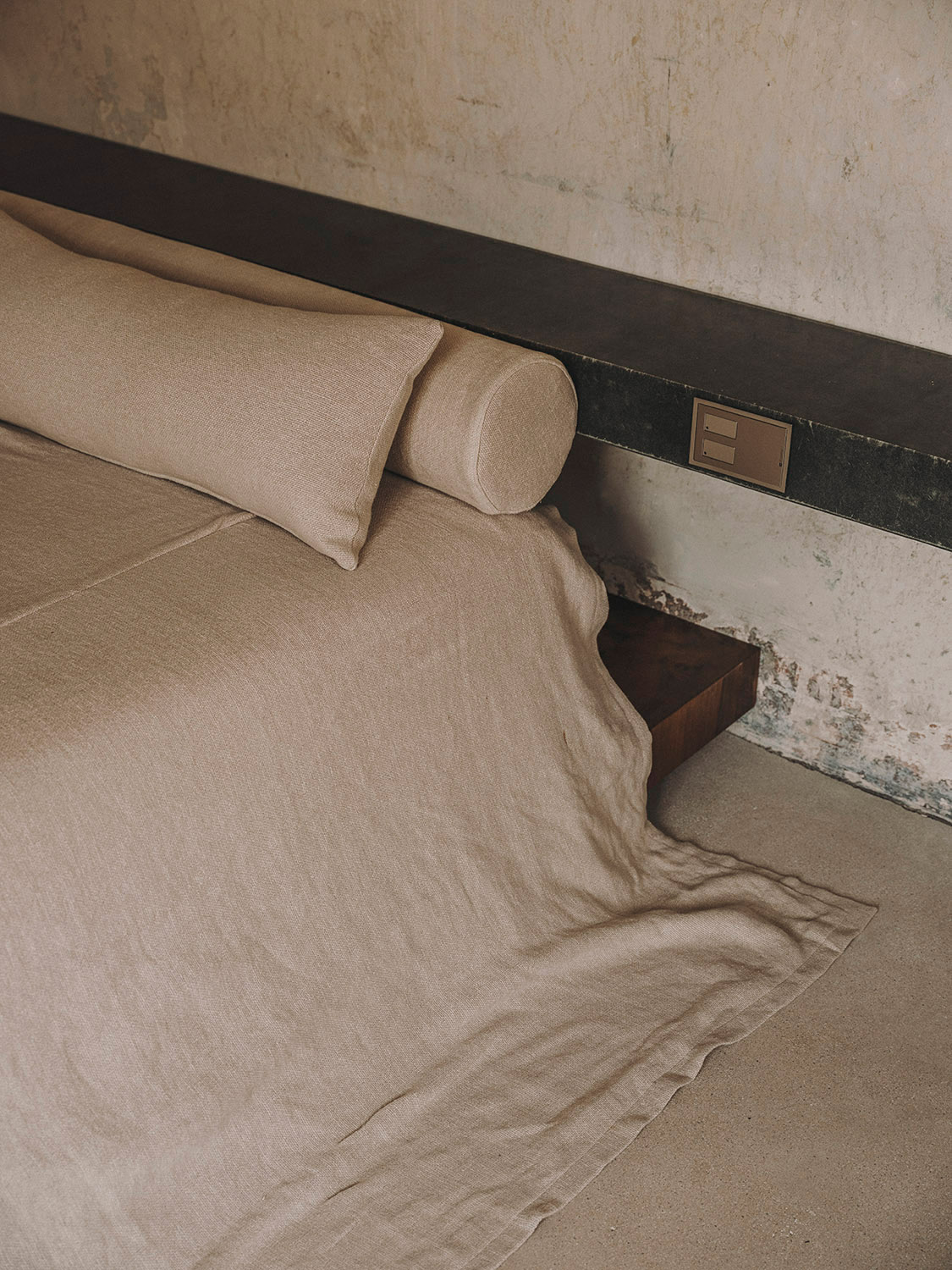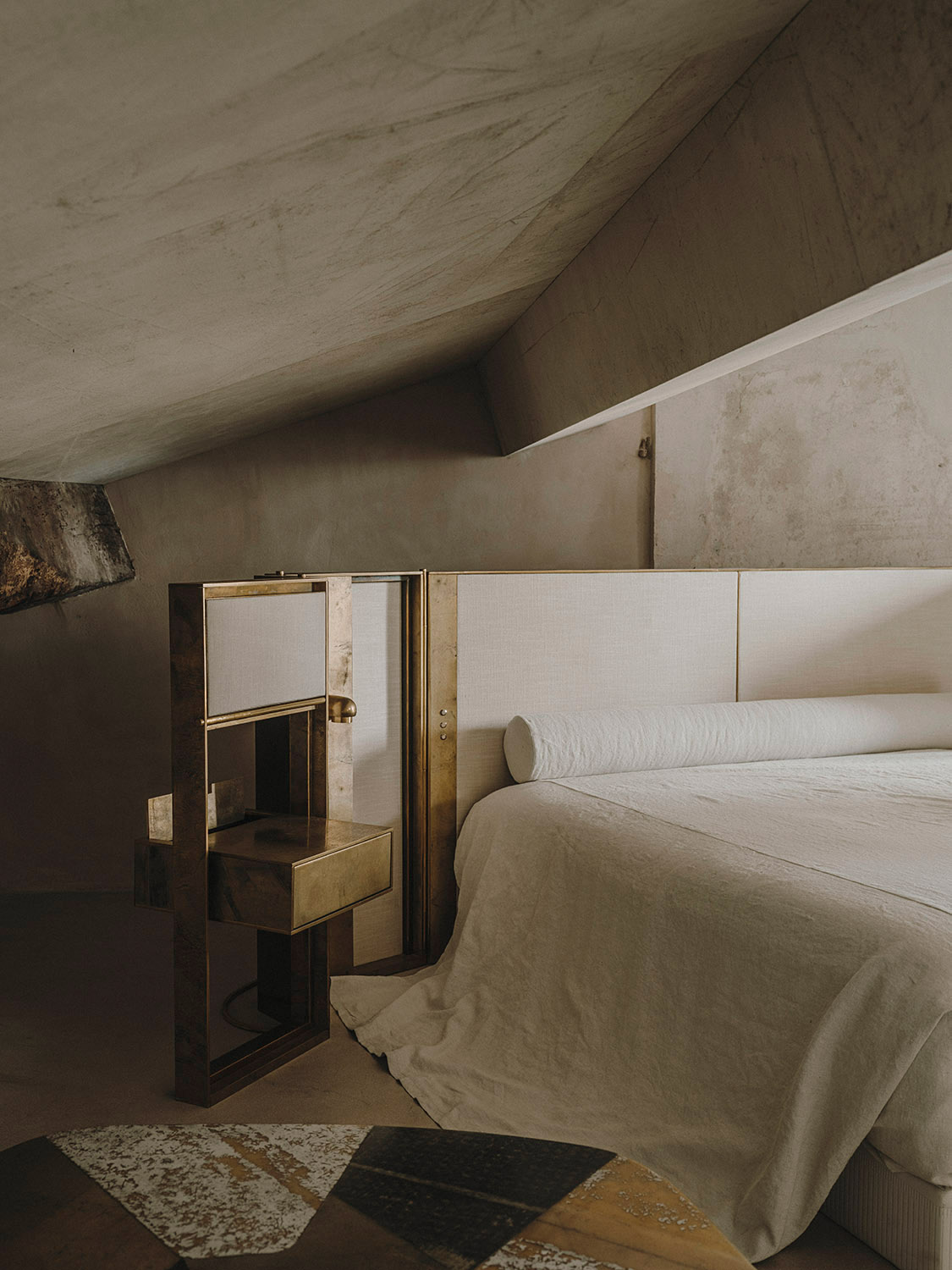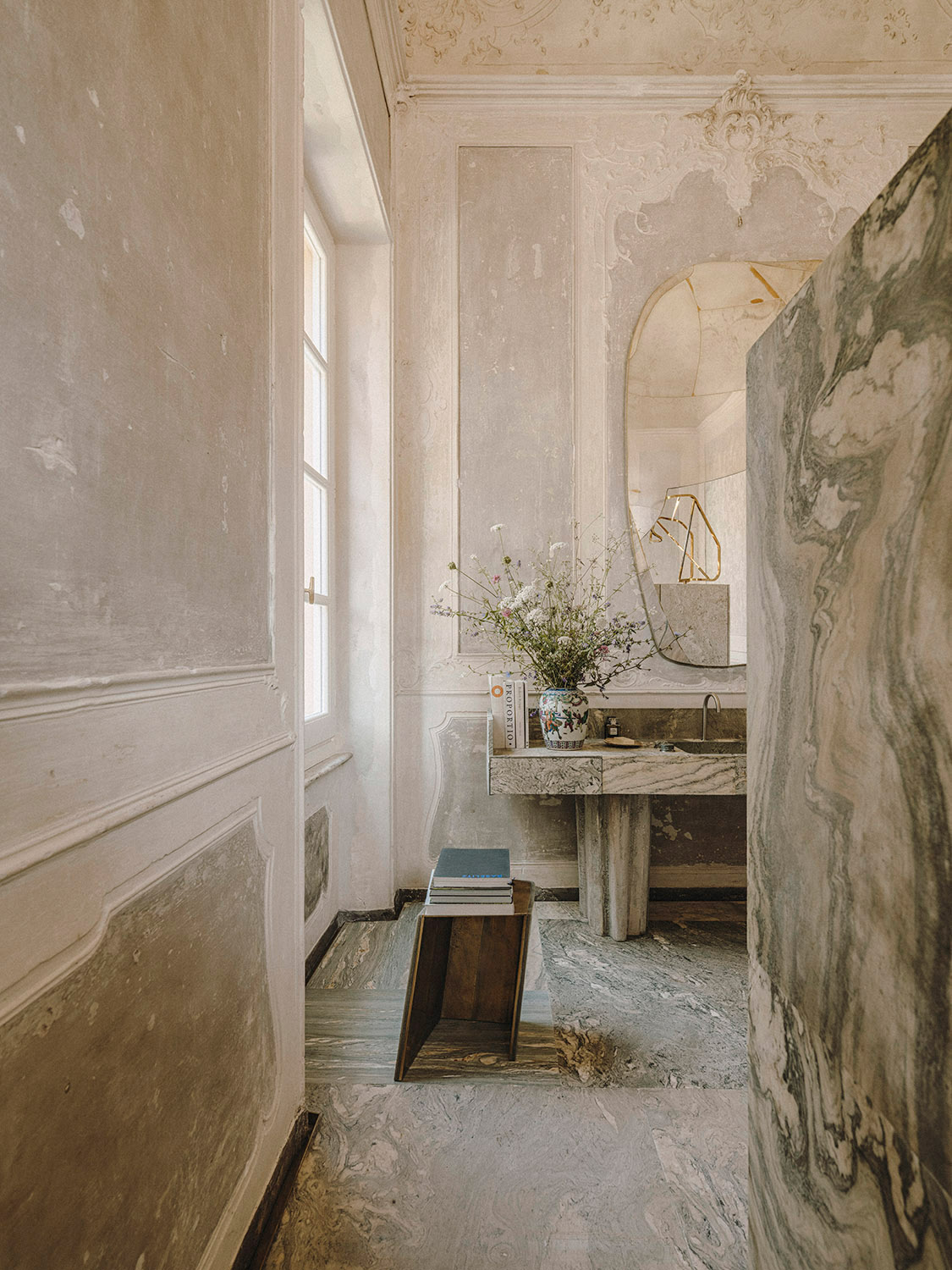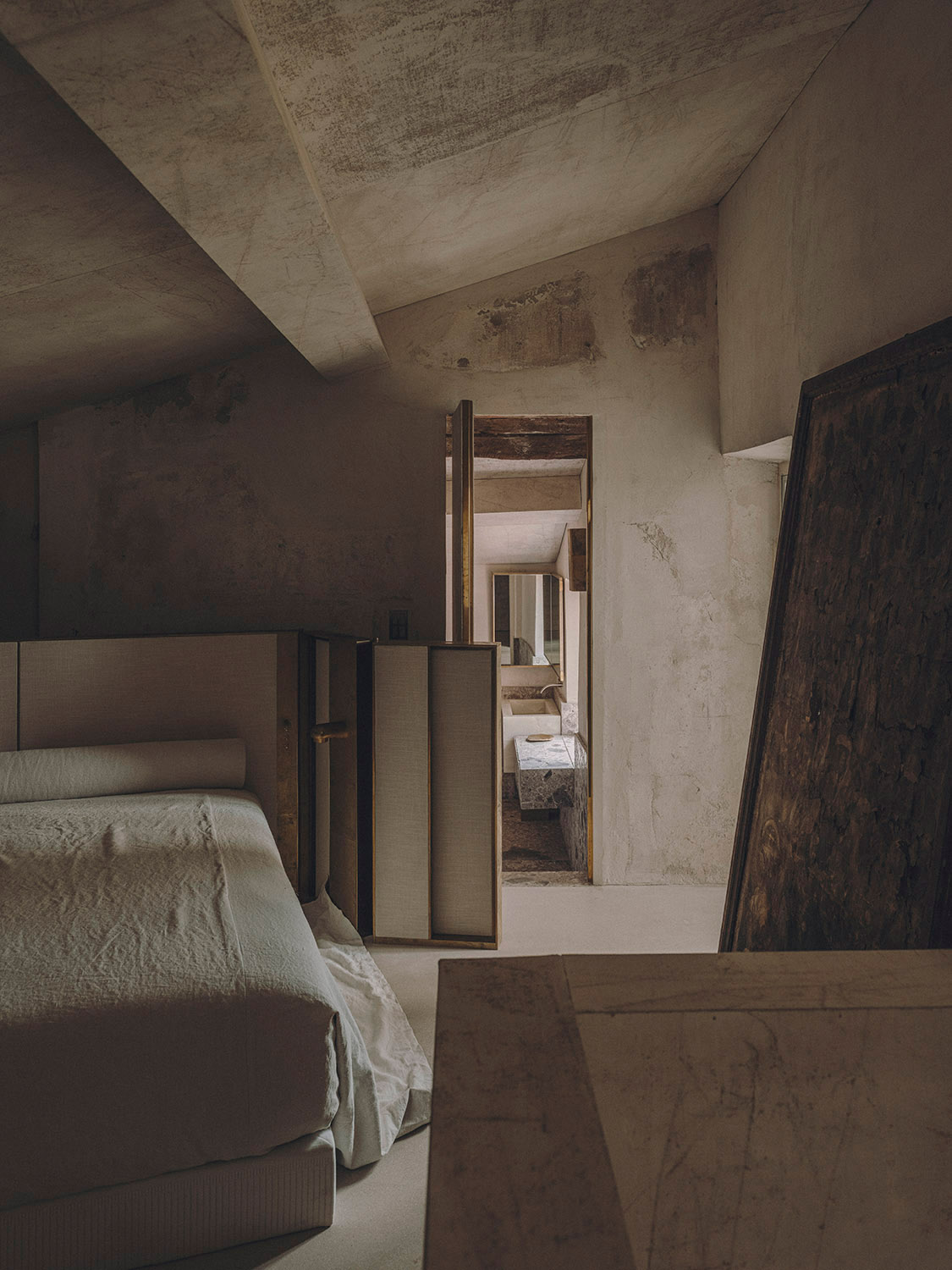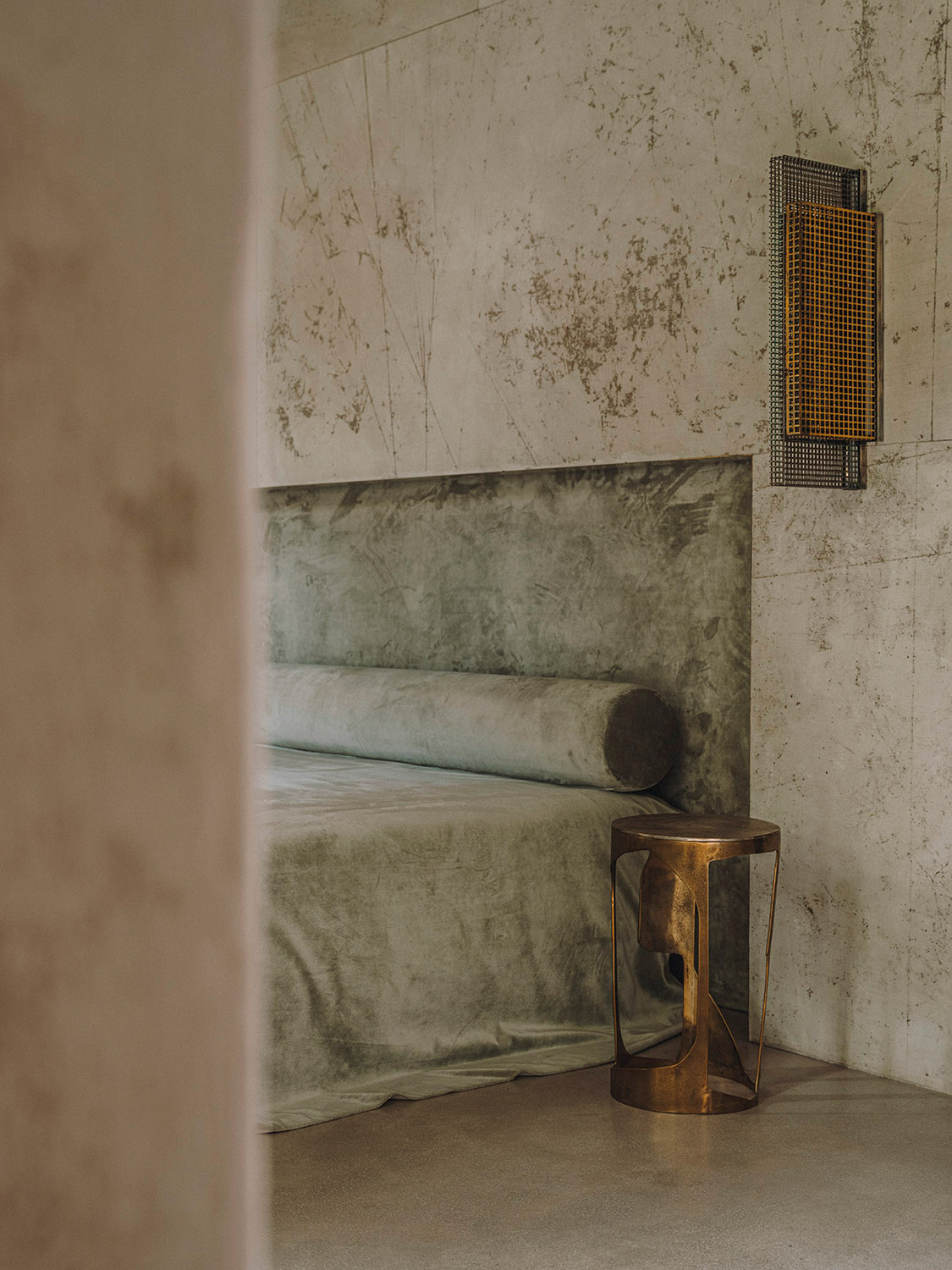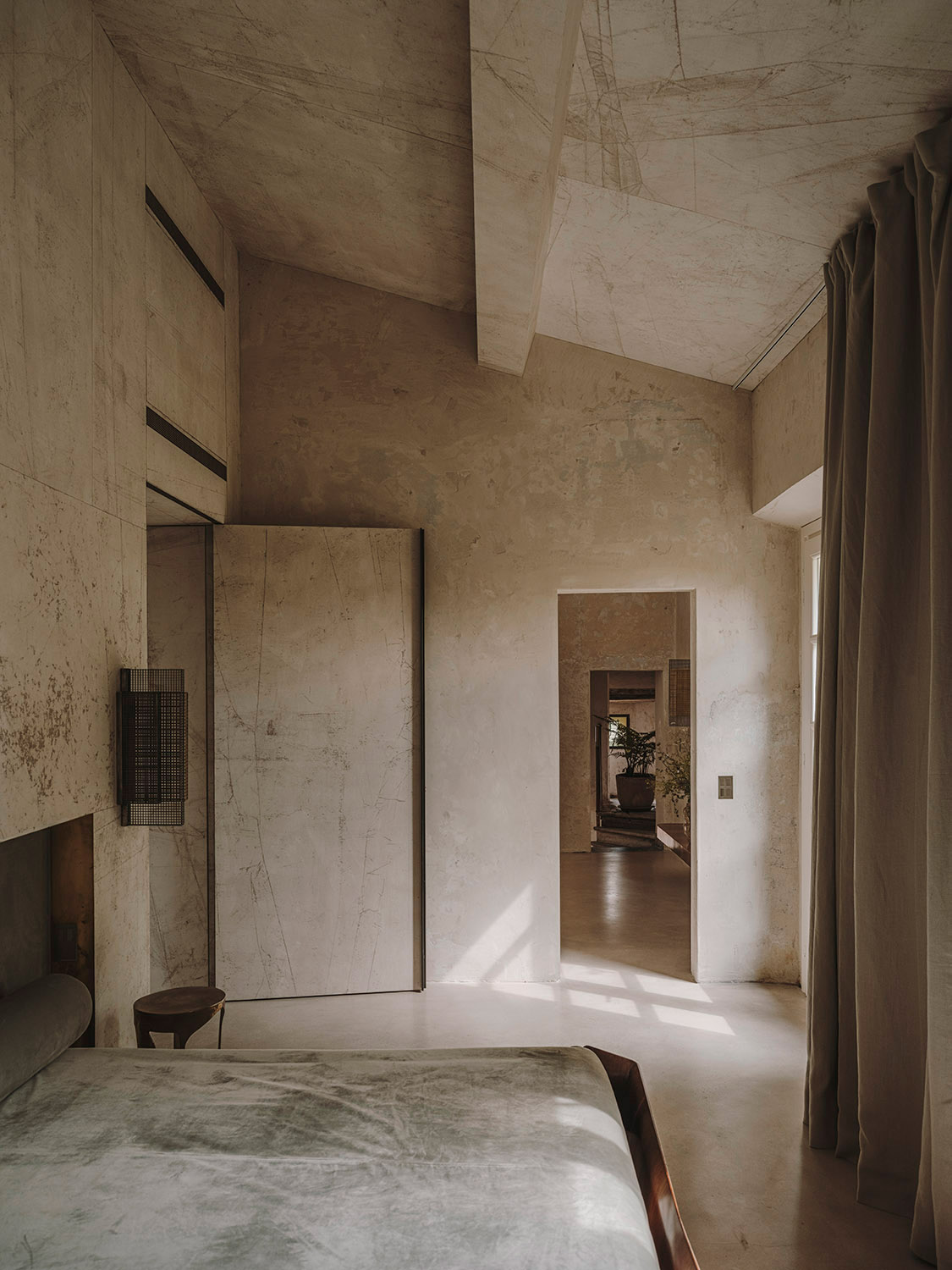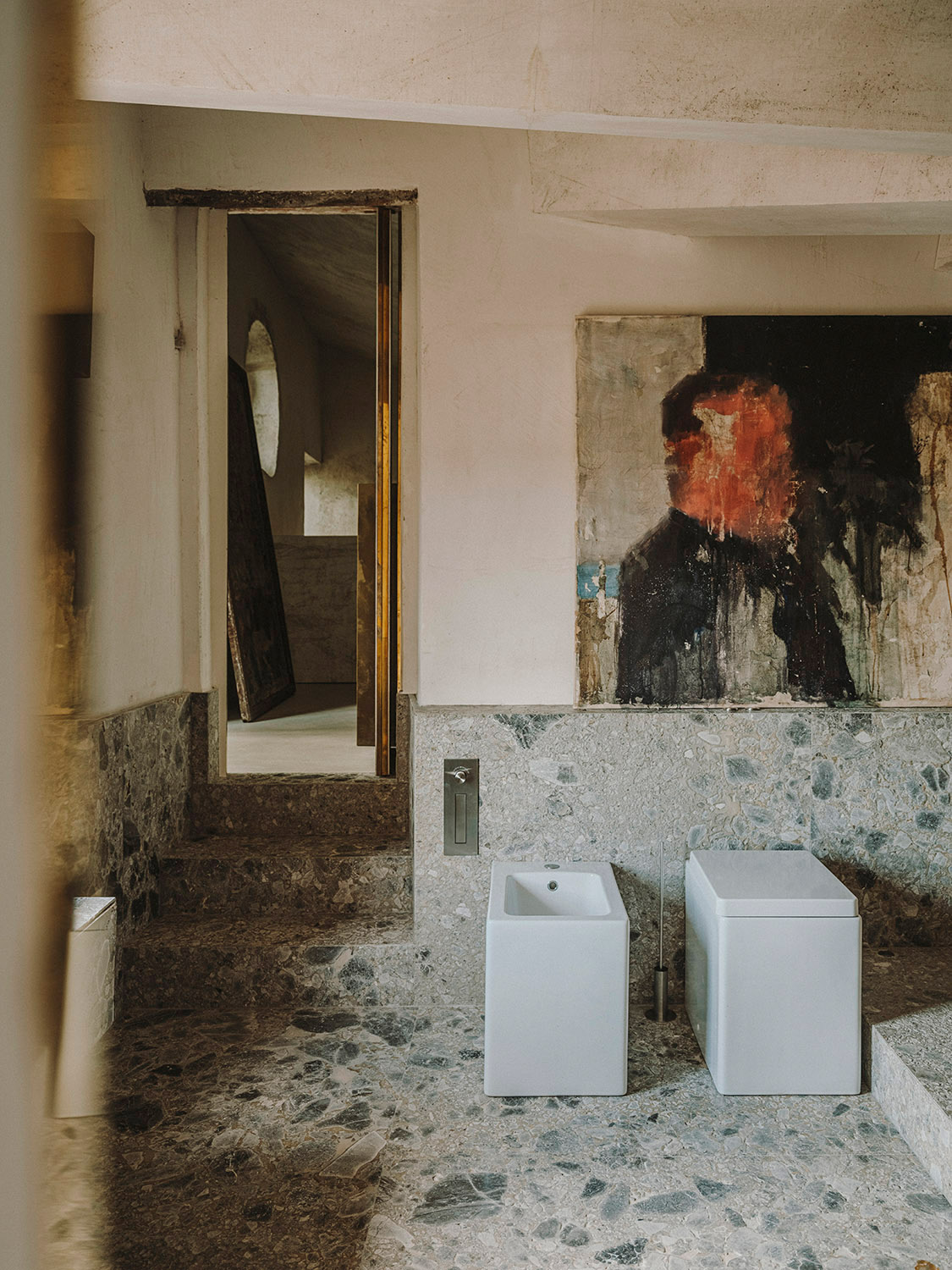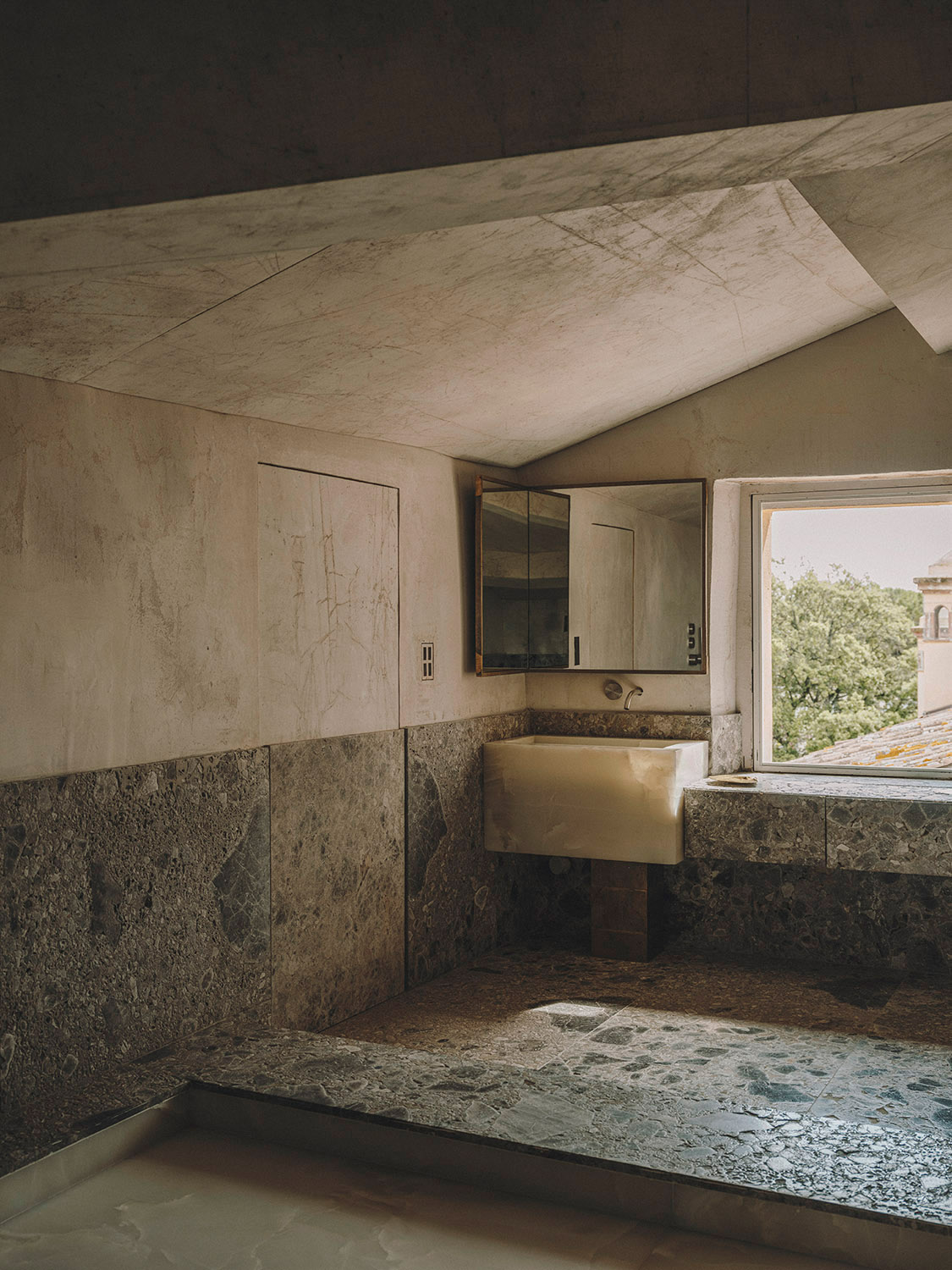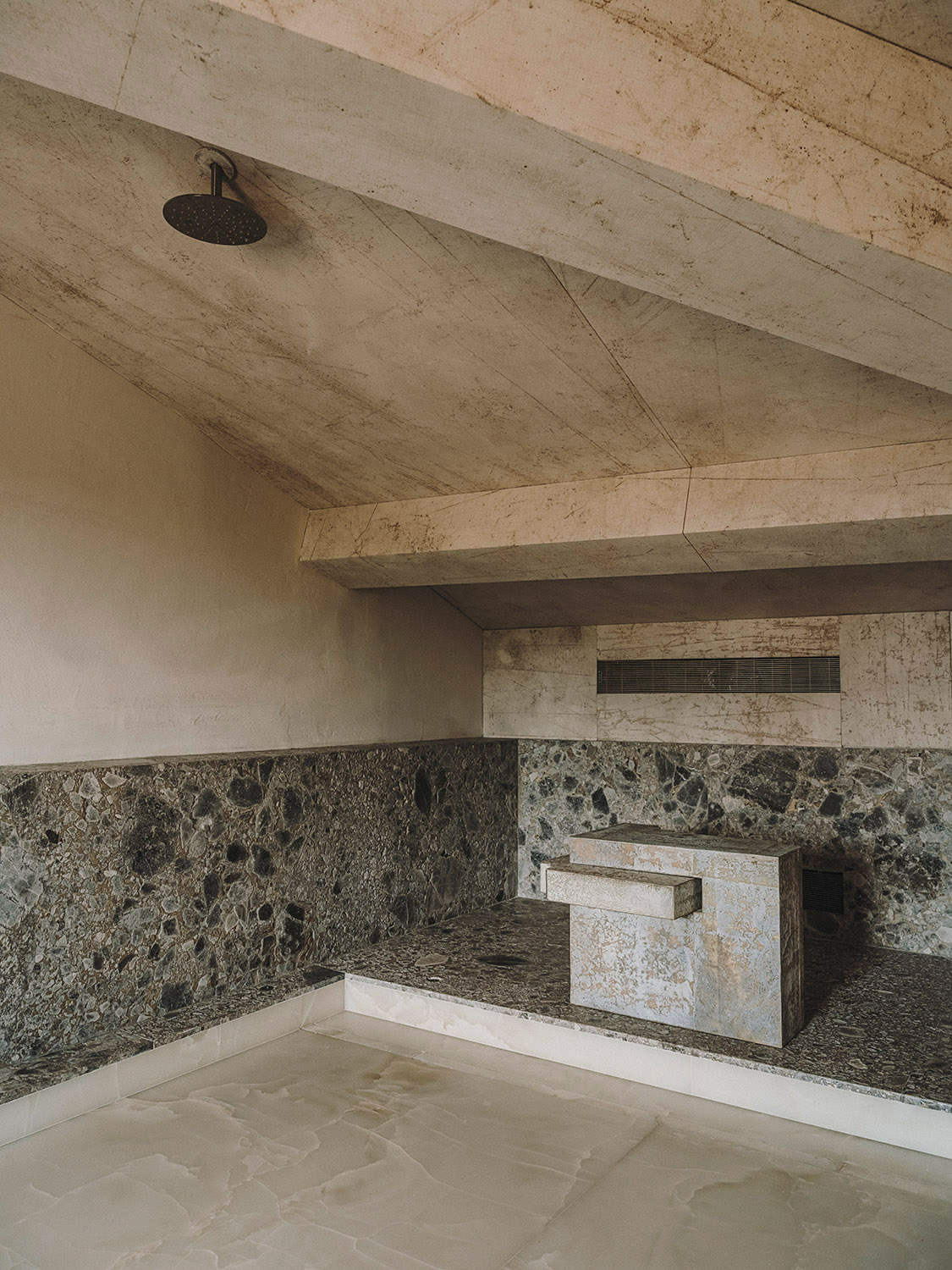
When Vincenzo De Cotiis and his wife Claudia Rose De Cotiis saw the villa in the Palazzo Digerini (Renaissance palace) in Florence, they were fascinated by the old and new atmosphere. The villa had been a convent for nuns in the late 19th century, and the serenity of the abandoned, partially destroyed building gave them a sense of ancient spirituality and reminded them of their childhood.
All the houses convey emotion and it is a place where people can feel happiness. The smell of rosemary and the pate that pervades the high street, and in the morning the living room is decorated with freshly picked wildflowers, elegantly planted in antique Japanese porcelain vases. The De Cotiis have always lived in this historic home, and they love the contrast between old and new. Most of all, they like to relive what they have experienced, because a place full of history conveys the possibility of reinterpretation.
In typical De Cotiis style, the rooms and ceilings have been preserved, with only a few details restored, such as the decorative plaster created by the delicate artisans that gives the building its splendour. The room's most striking feature is its ceiling, a site-specific installation designed by German artist Felix Schramm (Intersection Pietrasanta, 2019).
- Interiors: Vincenzo De Cotiis
- Photos: Salva LóPez
- Words: Xran

